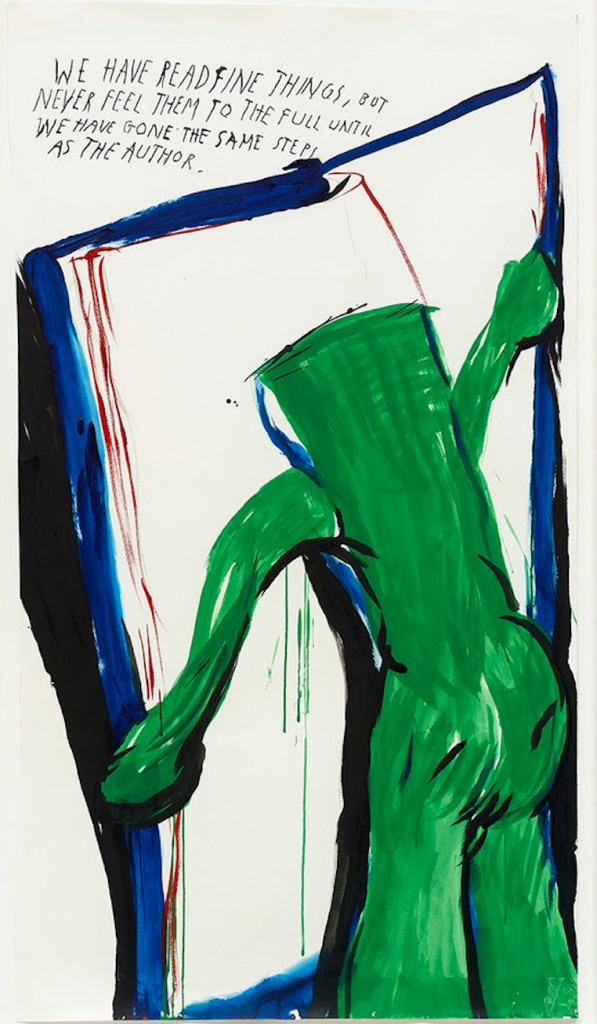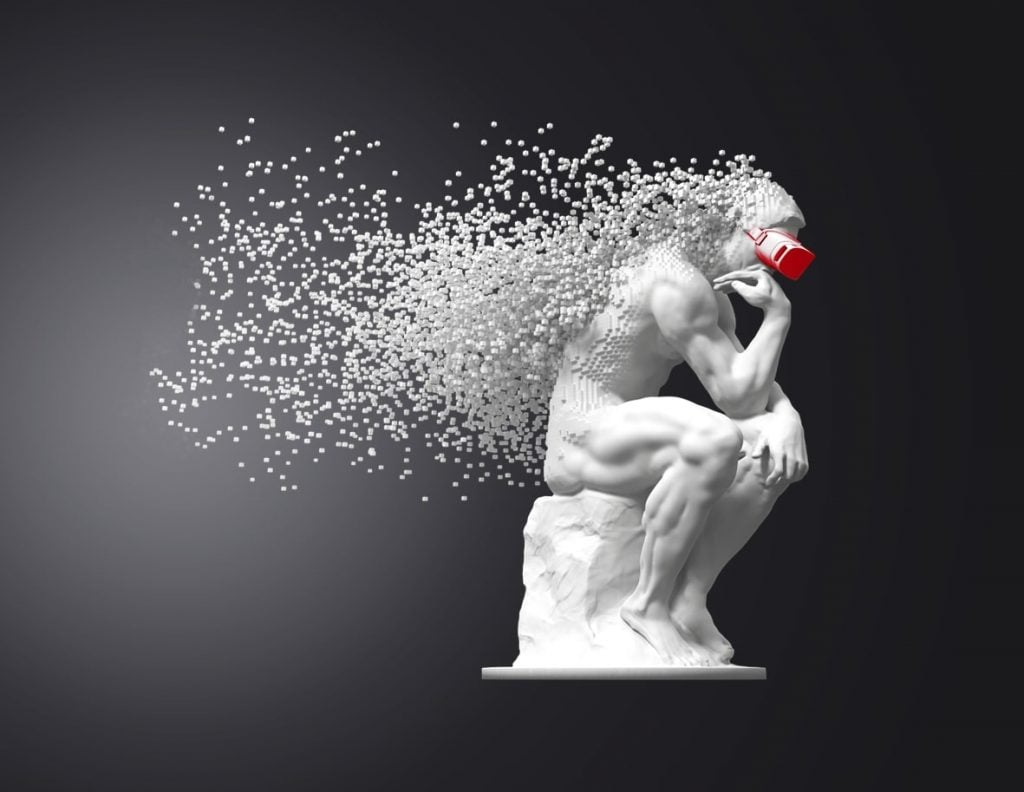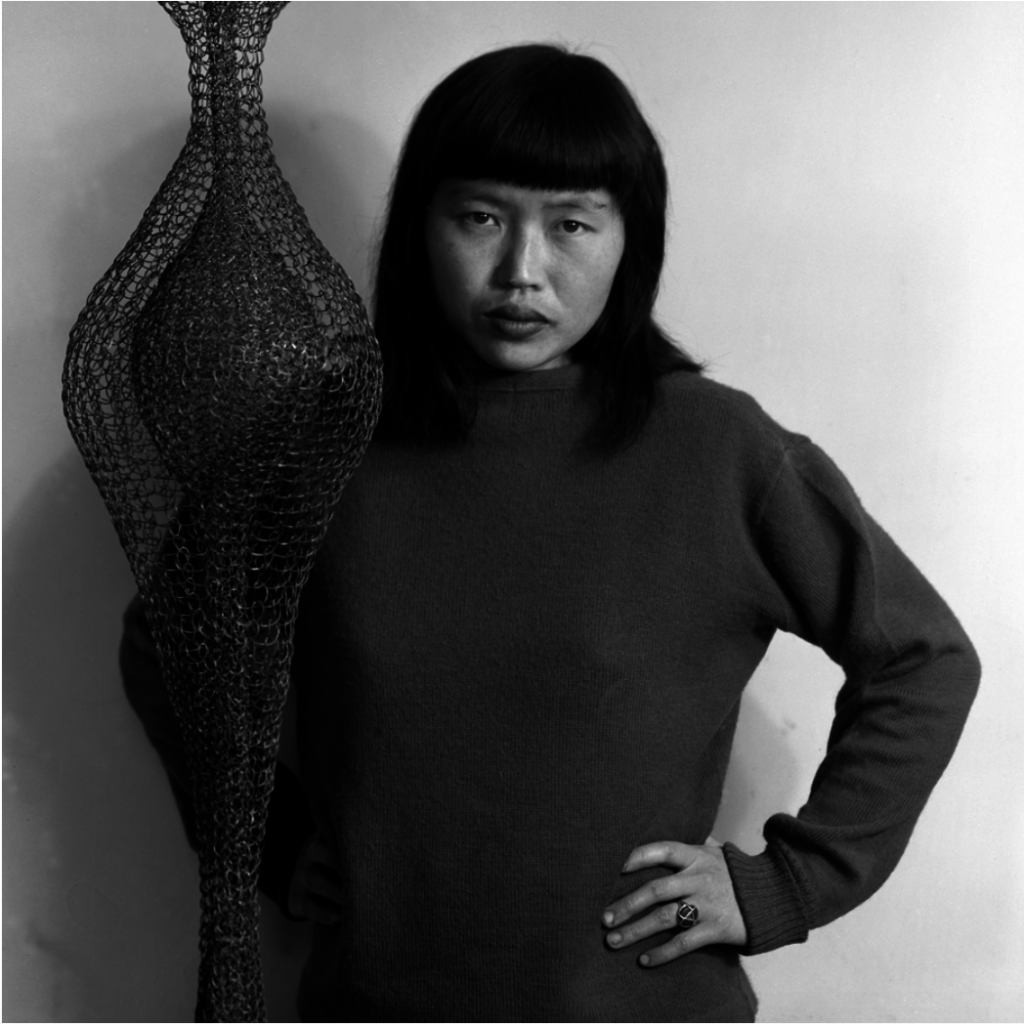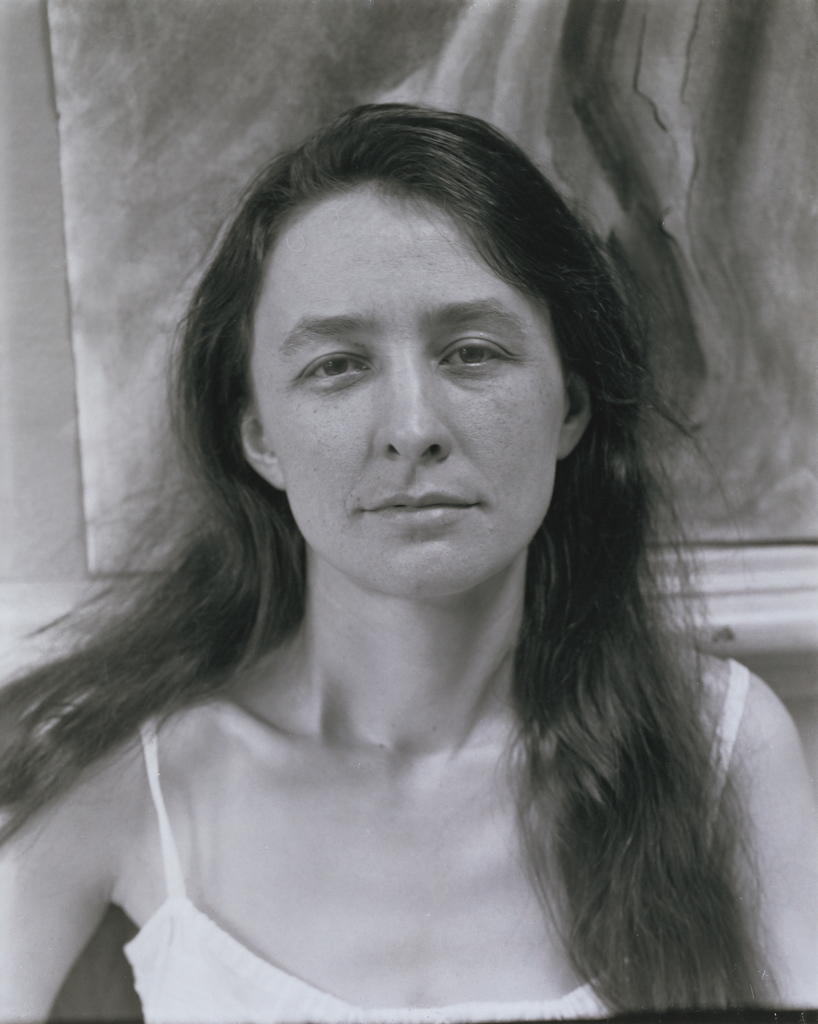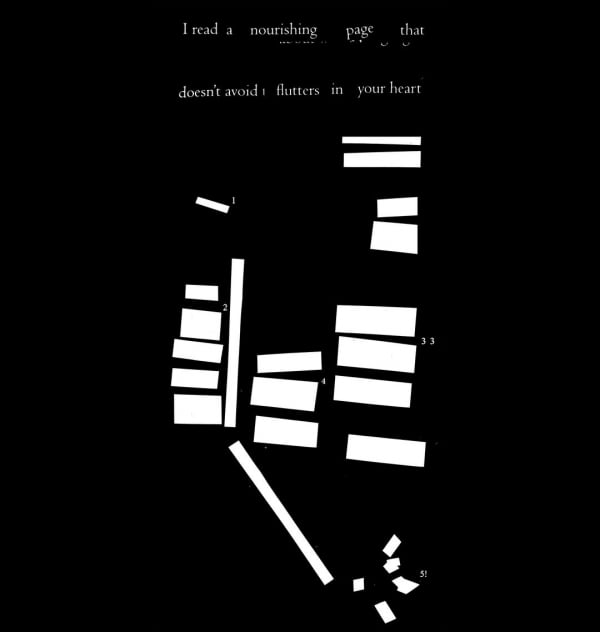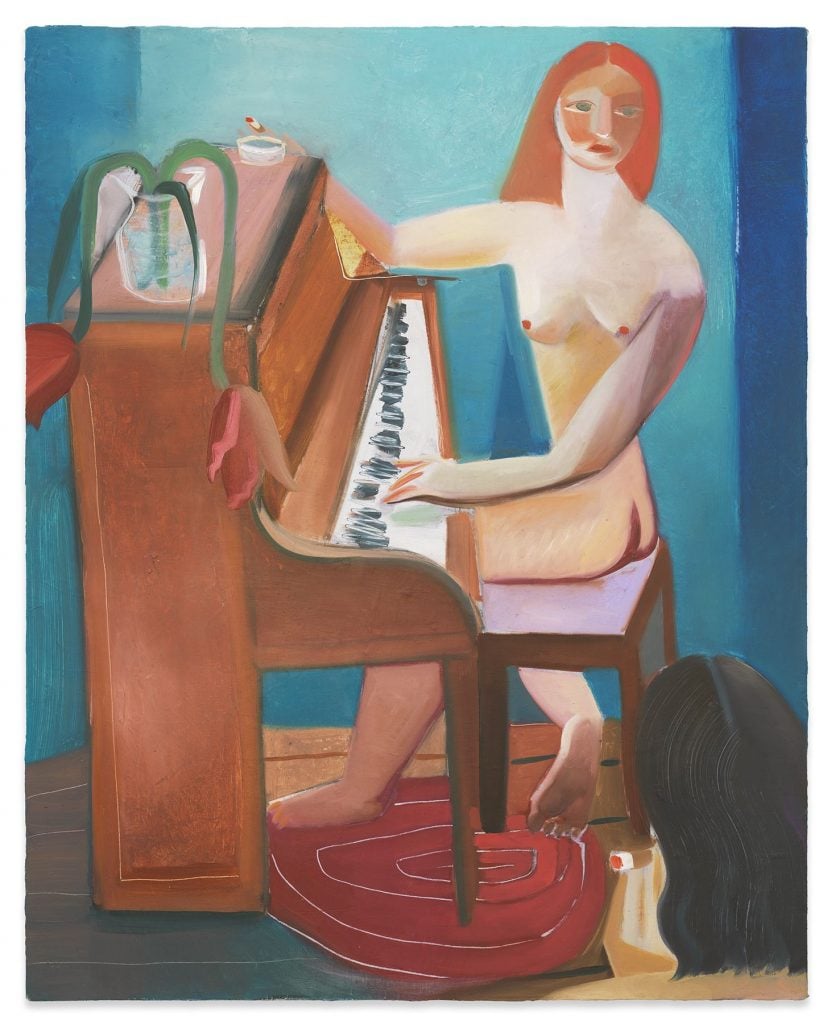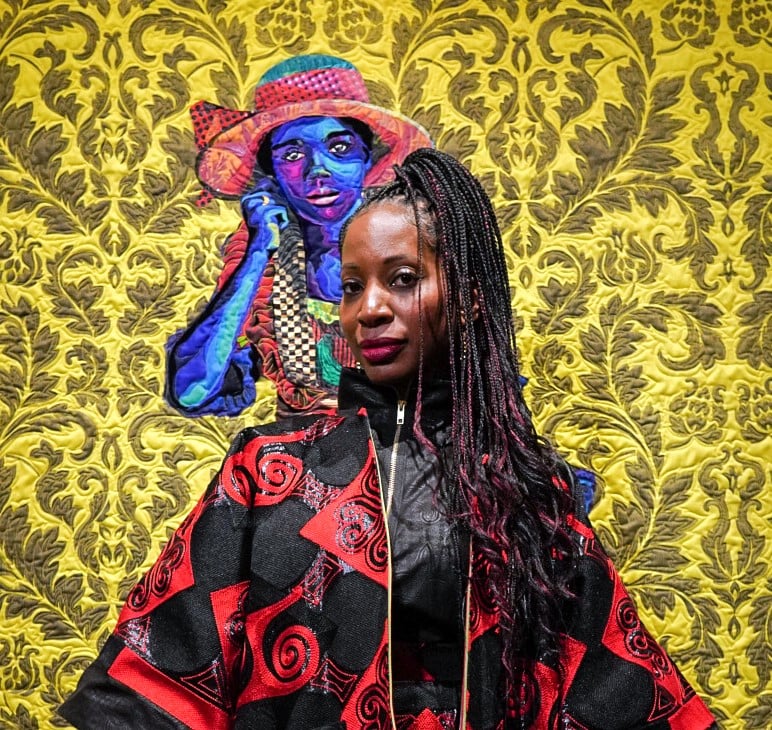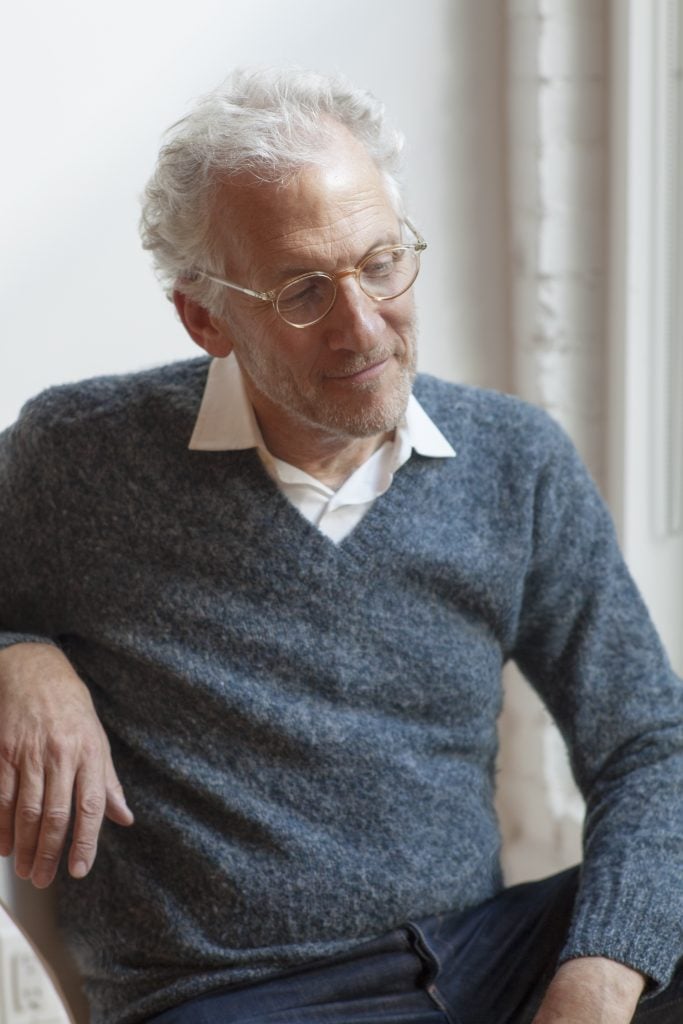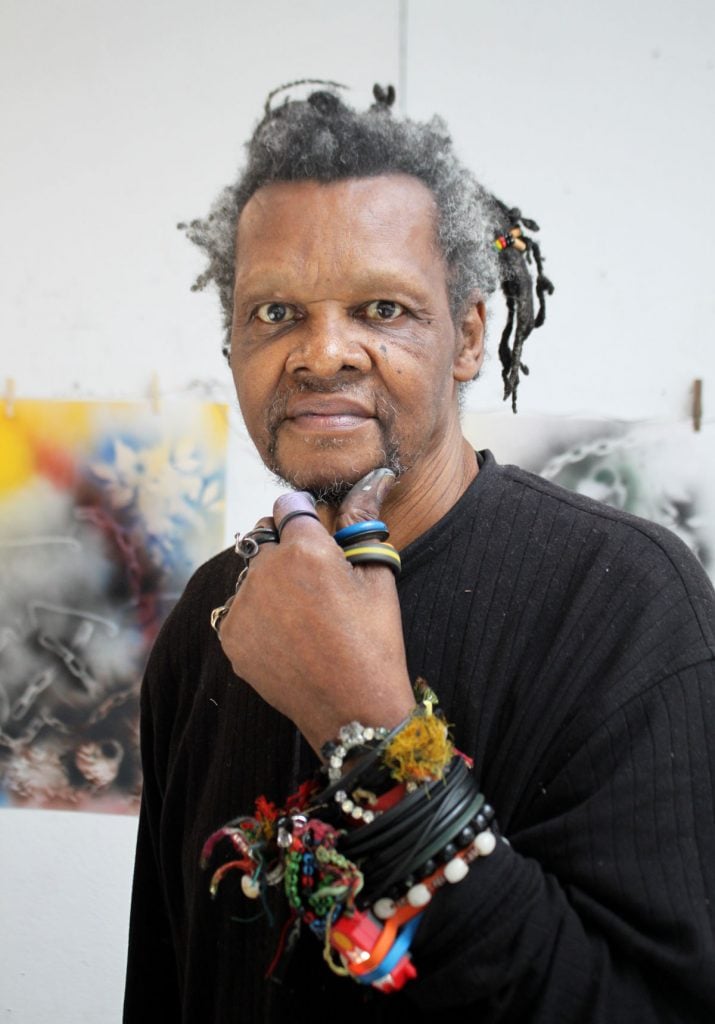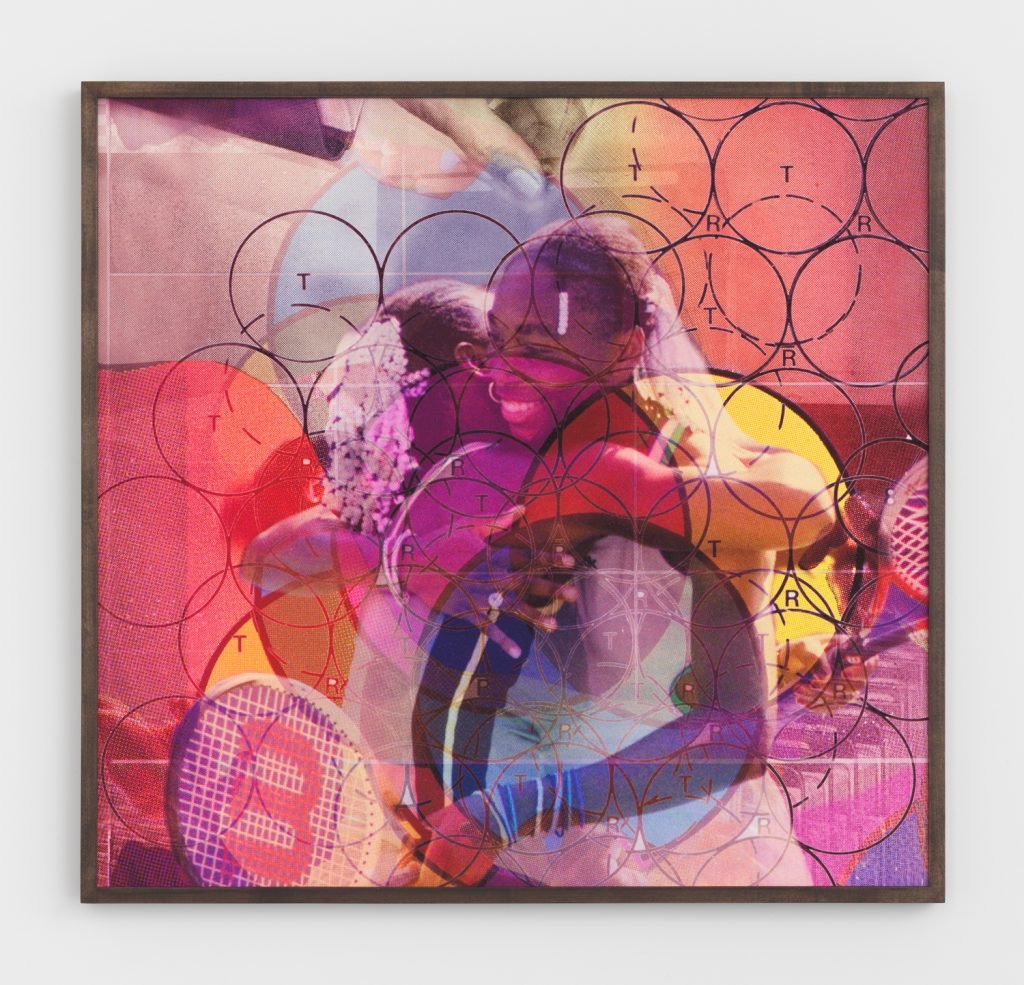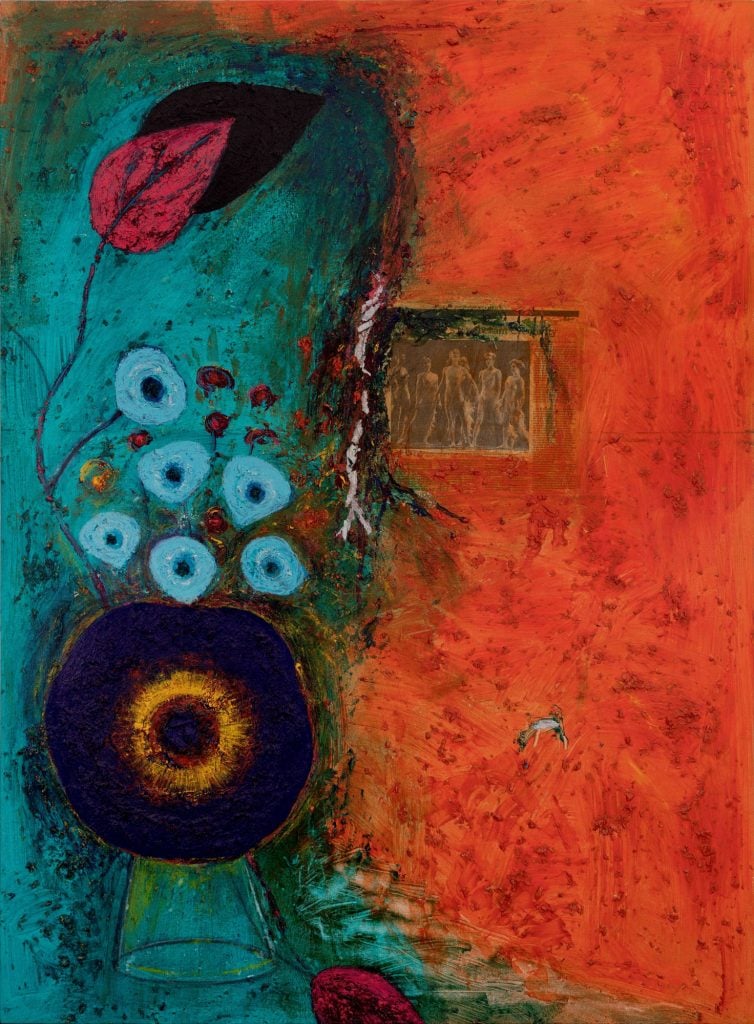by Georgia Drakaki
February 10, 2021, 6:01 p.m.
https://www.in.gr/2021/02/10/life/culture-live/sozita-gkountouna-mas-kanei-perifanous-sto-manxatan-kai-ston-kosmo/
Struggles relentlessly for the dissemination of Greek culture in a contemporary and “open” way
The cultural platform GREECE IN USA is a global organization that promotes Greek culture abroad and promotes international cultural cooperation. Founded in New York by the internationally renowned Greek adjunct professor CUNY Sozita Goudouna, one of America’s most prominent Greek curators.
GREECE IN USA makes an impressive opening amid a pandemic, launching, with the support of the Greek Ministry of Culture, the group exhibition “The Right to Silence?” / “The Right to Silence?” on the penitentiary system, prison and incarceration regimes and the reform of criminal justice, in different geographical and political contexts. The first edition of the exhibition is currently presented at the John Jay College of Criminal Justice, CUNY, City University of New York with the participation of 43 Greek and Cypriot Artists, while the second parallel action is expected in February at “Undercurrent”, one of the most influential Brooklyn-based showrooms worldwide.
So we talked with Mrs. Goudouna about the role of art in the time of a pandemic, her daily life between obligations and aspirations, the New York Performa Biennale, her favorite museums, GREECE IN USA and many more and even her views on rebetiko. This Greek woman has managed to remove the rust from her mind: nothing old and outdated in the way she perceives and acts for Greek culture, which is rarely found in local professionals of “culture” and “art”.
As we were discussing, I thought what a wonderful thing it is to be Sozita, to live in Tribeca (Manhattan’s most hip district) and to breathe with the lungs of creativity and art, collectives and exchange of ideas.
It’s like a dream.
But to get there, Sozita Guduna studied, worked and fought hard. That is why she makes us proud — not because she is Greek, but because the Greekness of her existence and action erupts unpretentiously and authentically.
A Greek woman in New York: how was the first night of the rest of your life in America? And how did you decide to leave Greece?
I remember my first night in New York in an apartment I stayed when I arrived at midnight. It was located opposite the historic Armory where the “Armory Show” took place in 1913, one of the most important exhibitions for Modern Art with the participation of Marcel Duchamp, Van Gogh, Gauguin, Cezanne, Picasso, Matisse, I felt so lucky !
However, what I will never forget was the day I found out what really makes you a New Yorker, the night I had nowhere to stay — due to financial and other circumstances — and spent the night in an overnight cafe-restaurant on Broadway. The edge of survival gives you a strength, that makes is easier to understand this city and sometimes “conquer” it with a sense of urgency.
Like Andre Gide wrote in 1926 ‘One doesn’t discover the new lands without consenting to lose sight of the shore for a very long time.’ I was 17 years in London, then from 2013–2015 in Greece during the years of the crisis, I decided to leave Greece because I was lucky to have been selected as the inaugural curator at Performa Biennial, one of my most admired international Biennials.
What exactly is the job of a curator? If one wants to deal with it, what stages does one “have to” go through first?
The role of the curator is relatively new and there are different schools of thought about curation depending on the generation and the artistic orientation. In the past, good degrees in art history, politics, or the social sciences could cover a broader education for a good career as curator, and most curators did not have specialized studies in curation.
Today, excellent postgraduate courses are offered internationally in curating, therefore, following a good first degree there may be specialization in specific areas of curation such as: public space, digital arts, performance, politics and art, anthropology, environment etc. In Greece, similar educational programs are currently being developed but have not yet been established. The Performa Biennial in New York, in which I specialized, focuses on the role of the curator as producer — commissioner — developer. Performa also inspired me to establish Greece in USA. The Biennale takes place in different parts of the city, from Times Square and New York Customs to MoMA and BAM. For a month, Performa is changing the way New Yorkers experience and perceive the city, especially after 9/11, which transformed the relationship between residents and the public space. The Biennial aims to “reclaim” public space and spaces that have changed use due to the dominance of Real Estate.
Do you feel, yourself, an artist?
The nexus of curator — artist has preoccupied me a lot. We both participate in the creative process with a synthetic and analytical approach. Roles shift in contemporary times and the artist becomes a thinker, even a “scientist,” in the sense of detecting and evaluating asymmetric knowledges, the curator is like a “metteur en scene,” as we would say in French, and I use this term to give the broader perspectives of curation.
I see curation as a practice based on scientific-technological and philosophical developments to explore new temporal and spatial interactions, new forms of artistic intervention, to unfold the wide range of scientific, theoretical and artistic positions that shape the curator, spectator / artist, performance / event / exhibition and intervention / cultural production.

Sozita Goudouna with Raymond Pettibon at Journal Gallery for his solo exhibition she curated in November 2020
Will the artistic activities of the Greece in USA platform mainly concern the visual arts or other fields of art?
Greece in USA seeks to present all aspects of cultural production as well as cultural research. We focus on the visual arts, performing arts, experimental cinema, new media, architecture and dance. We commission and present in collaboration with other curators and institutions art programs on specific topics and we also commission artists to create new works or we collaborate with them on existing works.
The non-profit organization develops productions that meet the needs of public or private institutions and spaces (site-specific/location driven), new media (and intermedia). The promotion of international exchange of practices and knowledge in the arts, the exploration of methods used in theatrical and curatorial practices and the points of intersection between the arts, society and the public sphere through interventions, collective actions, educational programs and publications, are the point of interest of Greece in USA.
Among the goals of the platform is the following: “To support inspired cultural practices of Greece, welcoming and cultivating new ideas and influences.” This was promised by various institutions in Greece, such as Niarchos and Onassis, but various young Greek artists constantly feel marginalized. Monica, and Maravegias for example aren’t “new and influential”. How do you perceive your commitment to a goal like this?
Our goal is to create the “third way” for cultural diplomacy between the state and major institutions that will always be in good cooperation with the institutions, ministries of culture and foreign affairs. I have worked as a consultant for the Onassis Foundation in New York (I have been Onassis Scholar since 2002) and I appreciate the work of the organization.
Stegi has contributed tremendously to the dissemination of contemporary culture in Greece and internationally and we observe that organizations such as e.g. the Athens Biennale can not survive without the support of the foundation. It almost replaces the state and for that it has a huge responsibility for its choices. An organization like Onassis has exceptional potential, but this does not mean that there will not always be ground to be covered in the promotion of contemporary artists, with different sensitivity and care, than the mapping and management of the contemporary scene by an organization that is “too big to fail.”

What do you think is the big, non-negotiable common denominator of the visual and performing arts?
I would say “presence in present time.” However, in the post-Covid era, physical presence is not a possibility, in most cases, for the reception of art. Mediated presence at present time is necessary both for the visual and performing arts. More specifically, the canvas or the three dimensional installations, or the theater, are models for understanding the problem of the tension between reality and representation. Their non-negotiable common point is the exploration of representation that is understood as a process and not as a given.
In my book “Beckett’s Breath” I try to examine these relationships as they unfold in relation to temporality, materiality and plasticity in the arts. The book presents cross-disciplinary findings around the nature and aesthetic possibilities of respiration, the minimum condition of existence, in the interface between the visual and performing arts.
Culture was devalued by the Greek state during the period of lockdowns — not that one can make a living from his art in this country, even in normal conditions. What do you think about the Support Art Workers movement?
I was not able to follow the movement extensively, I was informed via internet, but I was excited about the way art professionals networked in activism and mass mobilization. I think something similar in the fermentation of artists with common visions had been achieved in front of the parliament during the “indignant movement” in Athens, but it had not taken a more specific form with an active participation in the trade unions.
I hope that the opportunity is not lost with the “Support Art Workers” movement for participation in the decision-making that is often done through the trade unions (Chamber of Arts, Actor’s Equity etc.) or with a strong and dynamic platform that will imagine the ways these pre-existing networks can be replaced or strengthened.
Do you watch subscription channels and, if so, are there any series that you are stuck with?
I watch Netflix and have recently watched series like Gumbit’s Queen, Bridgeton, Lupin and I also started The Dig (it seems from the selections that I am nostalgic of London), but I usually do not get stuck with the series. I’m most fascinated by the structure and “temporalities” of a movie, so when I watch Netflix longer than I should, I switch to Criterionchannel.com.
What is usually the first thing you do in the morning and what is the last thing you do before you go to bed, in the context of your daily routine?
The first thing I do is brew my coffee (or I have prepared it the previous night) so I can get up from the overnight and go to the office and the last one to turn off the laptop after working late at night, with background sounds of a movie or podcast. During the weekends I hope to get a few or many hugs.
Do you think that art should be militant, political or accusatory or, is it better for the creator to express her/himself by taking a distance, as an attempt to make her/his work timeless?
I believe in “living” art and “dead” art. I think Peter Brook remains unsurpassed in his theory in “The Empty Space” when he talks about the four categories: “Dead”, “Sacred”, “Rough” and “Immediate” theater. Consequently, whether militant or non militant, we are interested in art that is not “dead.” Militant art has references to major political processes and the relationship between politics and art in catalytic periods such as, say, the Russian Revolution. In Greece, poets, writers and artists such as Ritsos, Katrakis and many others were indeed militant with great impact on society. In contemporary times, when artists, but also curators, use political and social sensitivities as a means to justify the existence of their work, I believe that they are often led to a “cul de sac.”
At the same time, however, in modern times, if the artist-thinker does not negotiate environmental and social issues, she/he will soon find that his / her work will be redundant. Pretense is the problem in all aspects of culture and life.
What is your favorite museum in the world?
With the exception of the Anthropology Museum in Mexico, I would say that probably my favorite museum, owing to its size, but also exhibits and history, is the Foundling Museum that was situated next to my old house in London. Foundling was originally founded in 1739 as a hospital by the philanthropist Thomas Coram for the care of abandoned babies and is still a charitable organization.
At the same time, it is an exhibition space that hosts excellent exhibitions of contemporary art such as an exhibition with Mat Collishaw, Tracey Emin and Paula Rego. The artists were involved in a dramatic visual dialogue about the history and themes of the Museum, which was Britain’s first institution for abandoned children. This unique exhibition continued William Hogarth’s legacy in the eighteenth century, inviting leading artists to showcase their work at the Foundation, raising awareness of society’s failures against vulnerable children and mothers. Among the artists who supported the Hospital were William Hogarth and composer George Frideric Handel. The Museum’s Collections include paintings, drawings, prints and sculptures created and donated by Hogarth and others.

Margarita Athanasiou “Prison — Industrial Complex” The Right To Silence, Shiva Gallery, John Jay College CUNY, 2021.
https://shivagallery.org/featured_item/the-right-to-silence/Greece in USA’s first group exhibition explores the penitentiary system to see if art and aesthetics can break the silence on critical political issues such as mass imprisonment and criminal justice reform. How did the decision / inspiration to present this extremely delicate, difficult and challenging issue came about ?
The subject of the exhibition I am curating is based on a reversal: I am interested in paradoxes, when they illuminate profound meanings. In this case it is about the well known “Miranda Rights” that as Greeks we learned from Hollywood crime films. I was always impressed by the expression “you have the right to remain silent.”
Silence is transformed into a right when what can be said might be legally binding for a citizen of a benevolent democracy. The paradox, however, is that some citizens remain silent because they are not given the opportunity to speak, therefore, the right to freedom of opinion and expression.
In the group exhibition, “Miranda Rights” acquires a metaphorical sense in terms of exploring moral issues, but also aesthetic forms and artistic means, if we assume that silence is the culmination of abstraction. At the same time, we are confronting the confinement of the current pandemic, hence, despite the sensitive balance of drawing a parallel between the confinement and incarceration indeed we become more aware of the issue of mass imprisonment during the current condition that we all share.
Who is Sozita Goudouna? Everything looks charming and rare on you. Let’s start with the name and get to the multi-page CV…
Who is she ? I also wonder when I catch Sozita talking to herself. I try to discuss with her often as a kind of contemplation and self-awareness. My name comes from “Sozo — to save in greek,” given that I was saved in childbirth and because my mom had a beloved nephew whose name was Sozos. Agios Sozon is the patron saint of the islands of Aegina, Lemnos and Patmos, I think. At the same time, my grandmother was Sotiria, so the child escaped being named by the strict name Salvation!
Would you ever return permanently to Greece?
My life has evolved in such a way that for better or worse I do not know if I can think of anything with a permanence. The current situation and the re-reminder of how vulnerable we are, both physically and mentally, reinforces this view.
Would you ever consider running for a political office in Greece or America?
I would if Greece acquired an inspired, contemporary, dynamic and militant ecological party, but such an expanded movement we will have to create ourselves. We cannot imagine ideal conditions in which we will be invited to participate because this isn’t realistic. Fermentations shape politics.
However, I have run for the municipal office in the island of Hydra, following my active participation, since 1988, in the ecological Association of Hydra that protects the environment and the Greek cultural heritage in the wider fields of archeology, traditional settlements and underwater antiquities.
Regarding ecology, the range of activities of the Association covers the protection of natural resources, fauna and the Mediterranean seal Monachous-Monachous, which lives and breeds in the Myrtoon Sea and in the eastern part of the Peloponnese. In 2011, I curated the project “Eleventh Plateau” in Hydra in order to explore the ways in which art can disseminate knowledge in relation to political ecology, you can find more information here .
Since we talked about politics, does Biden’s election or, better yet, Trump’s departure open up any new horizons in America and its relations with Greece?
Indeed, the term political ecology should refer to the ways in which politics can be purified or cleansed from the cynicism of the opportunism of certain participants in our public and political life. America’s diplomacy in relation to Greece depends very much on its current relations to Turkey. I imagine the correlations are even more complicated. In politics, nothing is exactly as it seems, but I believe that Biden is a factor of greater stability, at least compared to Trump.
https://shivagallery.org/featured_item/the-right-to-silence/How do you envision / predict the production and consumption of Art as a product in the coming years, with the impact of Covid on artistic creativity, but also on the mood of the public? Theaters, concerts, street musicians…?
I think a paradigm shift will take place, but for the wrong reasons. I mean we were waiting for a paradigm shift in the way cultural goods are received, but now it is becoming imperative because of the pandemic and I do not know where this adventure will lead us. Art should be a common good and the only positive opportunity given to us by a pandemic is to realize the social power and impact of art by expanding the ways of public viewing.
I welcome the recent calls of the Ministry for proposals for interventions. Cities should become museums without walls during the pandemic by presenting happenings, performances, concerts and all cultural activities under the Greek sun and moon.
What did you miss the most — you personally — during all these difficult months, without hugs?
My parents and friends, I have more than a year to travel to Greece and it is quite hard.
What book is currently on your nightstand?
Marc Lamont Hill’s book “We Still Here: Pandemic, Policing, Protest, & Possibility.” I admire the writers who managed to reflect on the period we are enduring with aptness and critical thinking. The book deals with the 2020 uprising that marked a new course for the “Black Lives Matter” movement.
The brutal assassinations of Ahmaud Arbery, George Floyd and Breonna Taylor, and countless other injustices, large and small, were the spark for the largest protest movement in US history. Hill critically examines the “pre-existing conditions” that led us to this time of crisis and turmoil during the pandemic.
Would you consider doing something about the unrecognized in “Rebetiko Song” through the platform? What music do you usually listen to in the car or on Sunday afternoons?
I would be very interested in organizing a conference with the participation of bands from Athens to articulate a contemporary “mapping” of Rebetiko, in collaboration with the Modern Greek Studies Department at Columbia University, for example, and to highlight Rebetiko’s relationship with the refugee history of Greece and the corresponding music styles in Europe and America that are not so well known to the American public. Rebetiko and its history probably have to shift from the interiors of homes and Astoria and to find themselves in a more common view and in a contemporary context in cultural centers such as BAM (Brooklyn Academy of Music) and similar venues.
I had the opportunity to experience George Katsaros or Theologitis, before his death. The memory is vague but I think it was at the Lycabettus open theater in great devoutness. I am also lucky to have Harry Logothetis as a friend, a former student at ASOE (School of Economics of Athens), one of those who drop out of school, who taught me about the clarinet, Vasilopoulos, Saleas and others and with whom we have attended wonderful festivals from Tzoumerka to Krestena and many more. I was also lucky enough to be a friend of Konstantis Loukos, whose father taught the history of Rebetiko at the University of Crete. I am also fortunate to have Ed Emery as a friend, the organizer of the Rebetiko conferences in Hydra.
In London, Ed with Pavlos Melas and his band “Moo Soo Too” had jams at my parties and Paris Gravouniotis tried to institutionally promote this kind of music in London. Therefore, I love rebetiko and I am very interested in its contemporary reception, such as Blues, Portuguese Fado and other styles of “underground” urban music. I do not know how to drive, but on my Sunday flanerie on the trains from New York to Philadelphia I do not forget to listen to Bellou, Papaoannou, Vamvakari and Tsitsani.

“Theoremata” group exhibition at EMST 2018 co-curated by AICA Art Historians Association board of directors
 - What do you keep from what you learned from your family, and your teachers?
- What do you keep from what you learned from your family, and your teachers? Would you like to describe to us the project you are organizing at the New Museum of New York with the artist for the Performa Biennale on November 14?
Would you like to describe to us the project you are organizing at the New Museum of New York with the artist for the Performa Biennale on November 14? Tell us about your experience from your collaboration with renowned American artist Raymond Pettibon and the David Zwirner Gallery, which opened its first exhibition space in Paris with a solo art exhibition.
Tell us about your experience from your collaboration with renowned American artist Raymond Pettibon and the David Zwirner Gallery, which opened its first exhibition space in Paris with a solo art exhibition. The David Zwirner Gallery, which celebrated its 25th anniversary in 2018, represents 60 international artists with exhibitions in New York (three galleries) from London to Hong Kong, and in 2020 will inaugurate the new five-storey gallery in New York designed by Renzo Piano.
The David Zwirner Gallery, which celebrated its 25th anniversary in 2018, represents 60 international artists with exhibitions in New York (three galleries) from London to Hong Kong, and in 2020 will inaugurate the new five-storey gallery in New York designed by Renzo Piano.
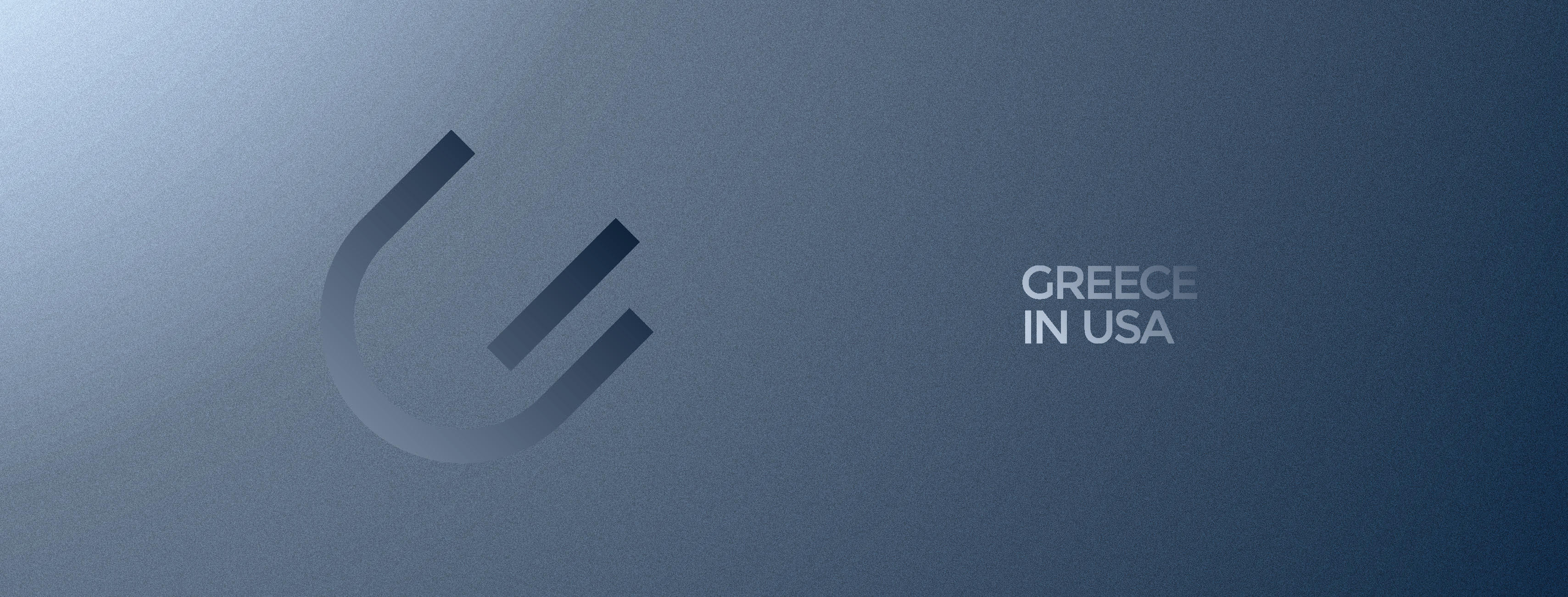
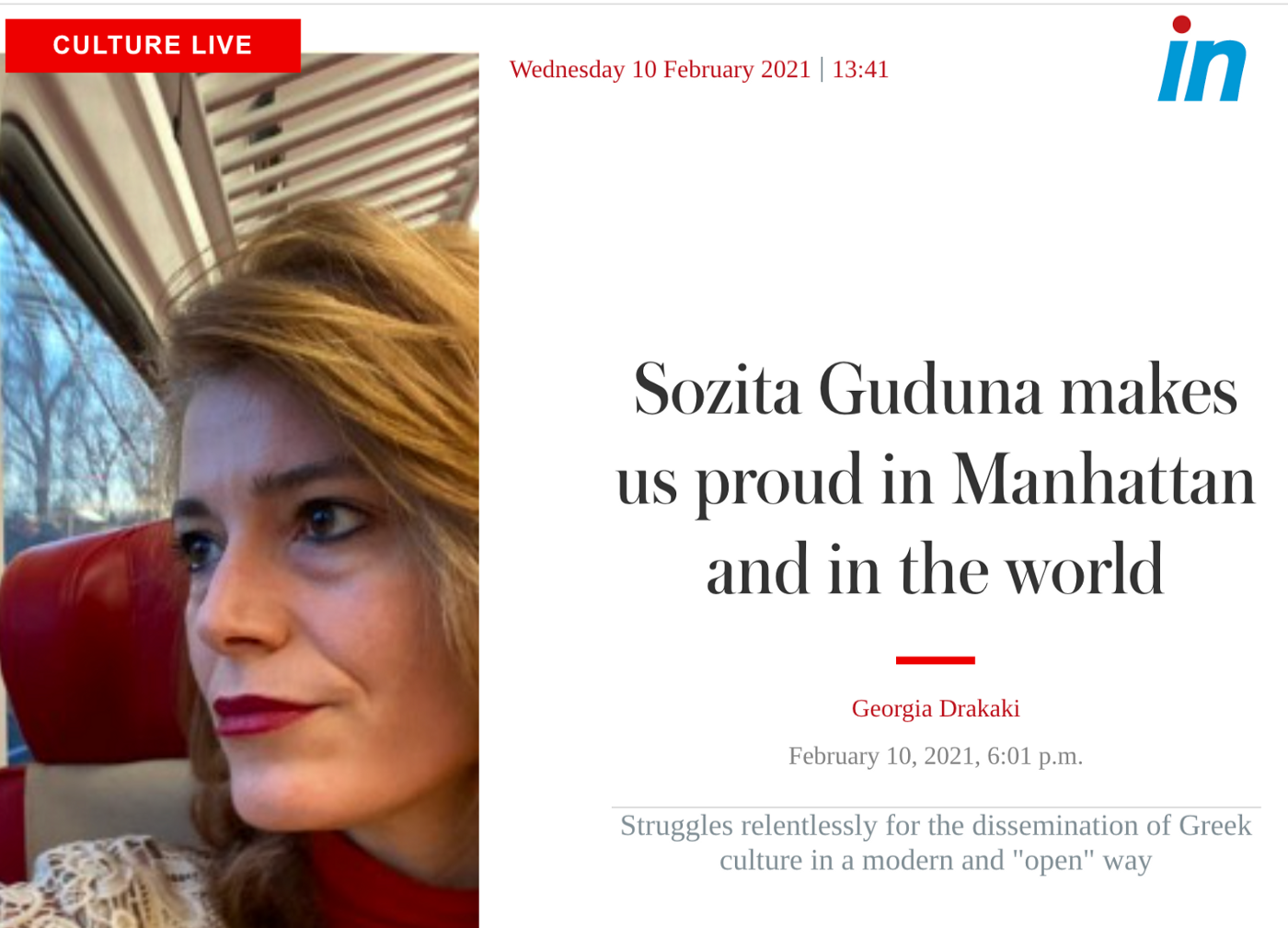
 Sozita Goudouna with Raymond Pettibon at Journal Gallery for his solo exhibition she curated in November 2020
Sozita Goudouna with Raymond Pettibon at Journal Gallery for his solo exhibition she curated in November 2020
 Margarita Athanasiou “Prison — Industrial Complex” The Right To Silence, Shiva Gallery, John Jay College CUNY, 2021.
Margarita Athanasiou “Prison — Industrial Complex” The Right To Silence, Shiva Gallery, John Jay College CUNY, 2021.  “Theoremata” group exhibition at EMST 2018 co-curated by AICA Art Historians Association board of directors
“Theoremata” group exhibition at EMST 2018 co-curated by AICA Art Historians Association board of directors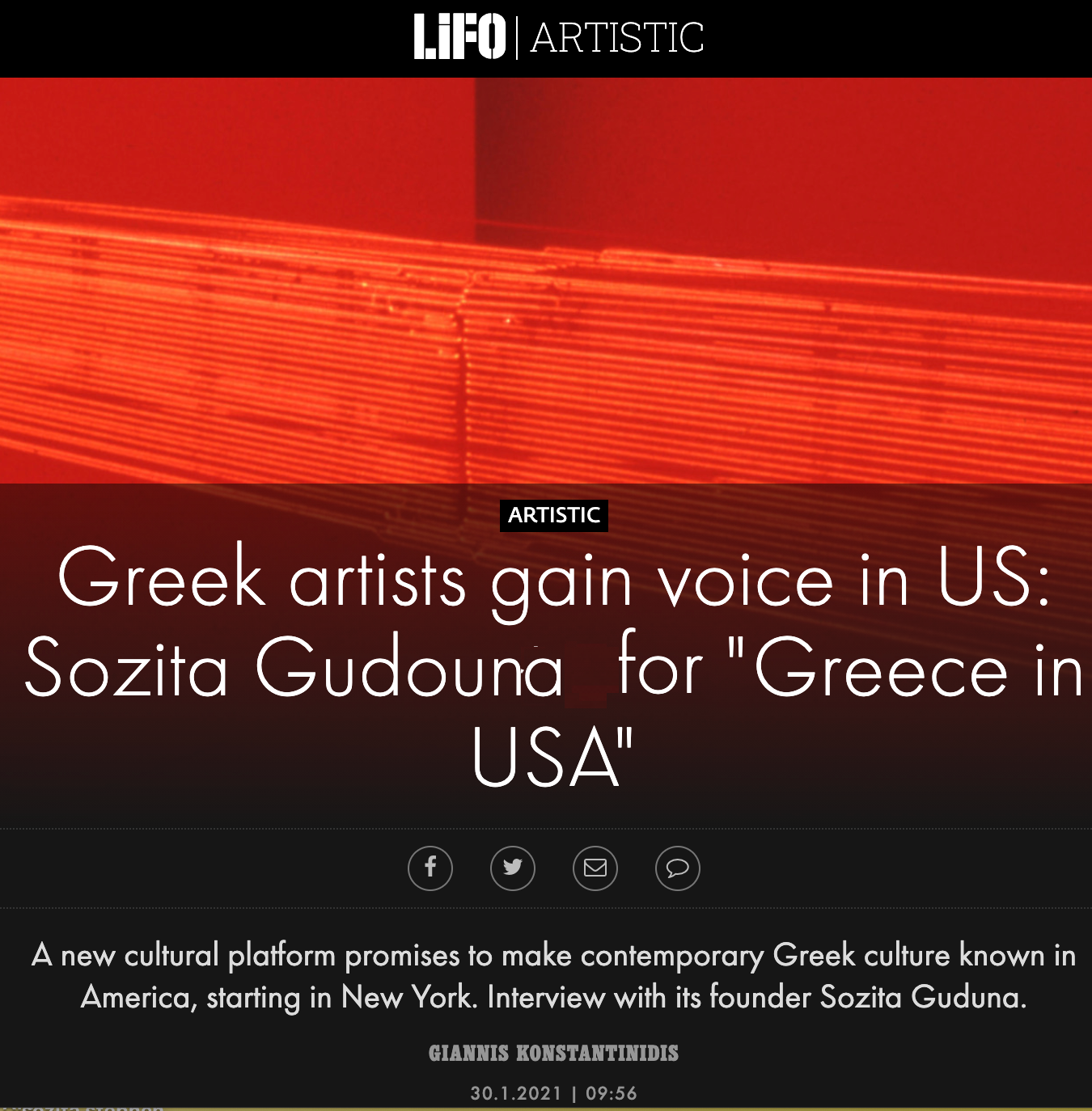
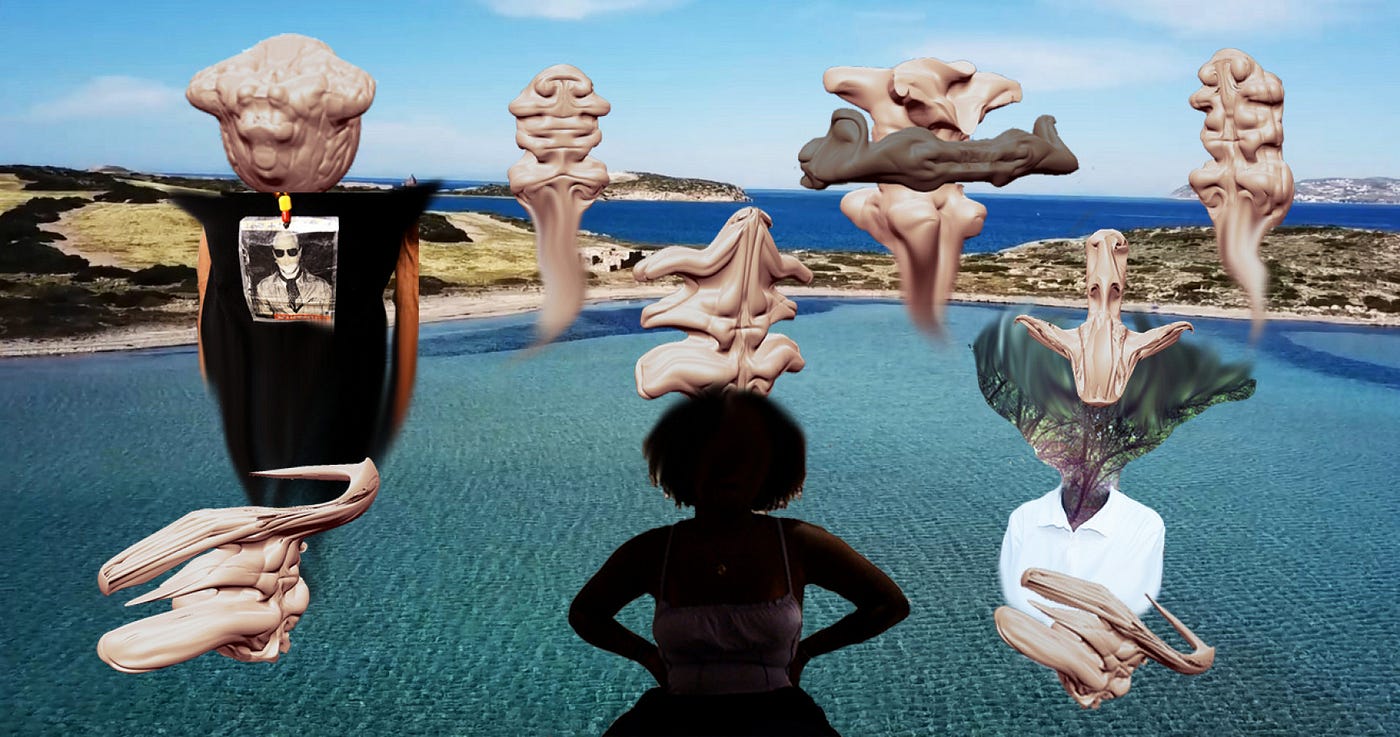 Eva Giannakopoulou, Dogman’s Dream, still photo from video
Eva Giannakopoulou, Dogman’s Dream, still photo from video Ashley Hunt
Ashley Hunt Ashley Hunt
Ashley Hunt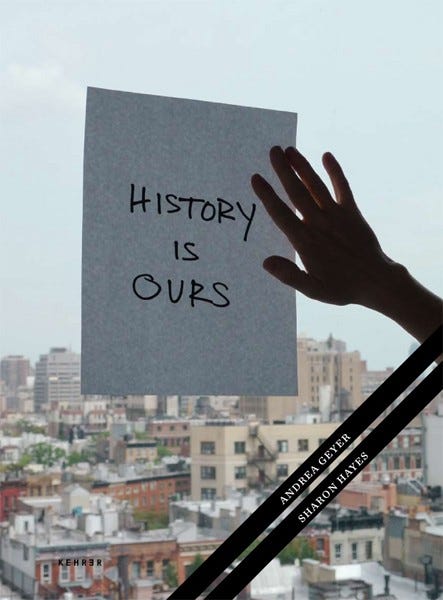 Andrea Geyer and Sharon Hayes “History is ours”
Andrea Geyer and Sharon Hayes “History is ours” Goro Nakamura, Explosion
Goro Nakamura, Explosion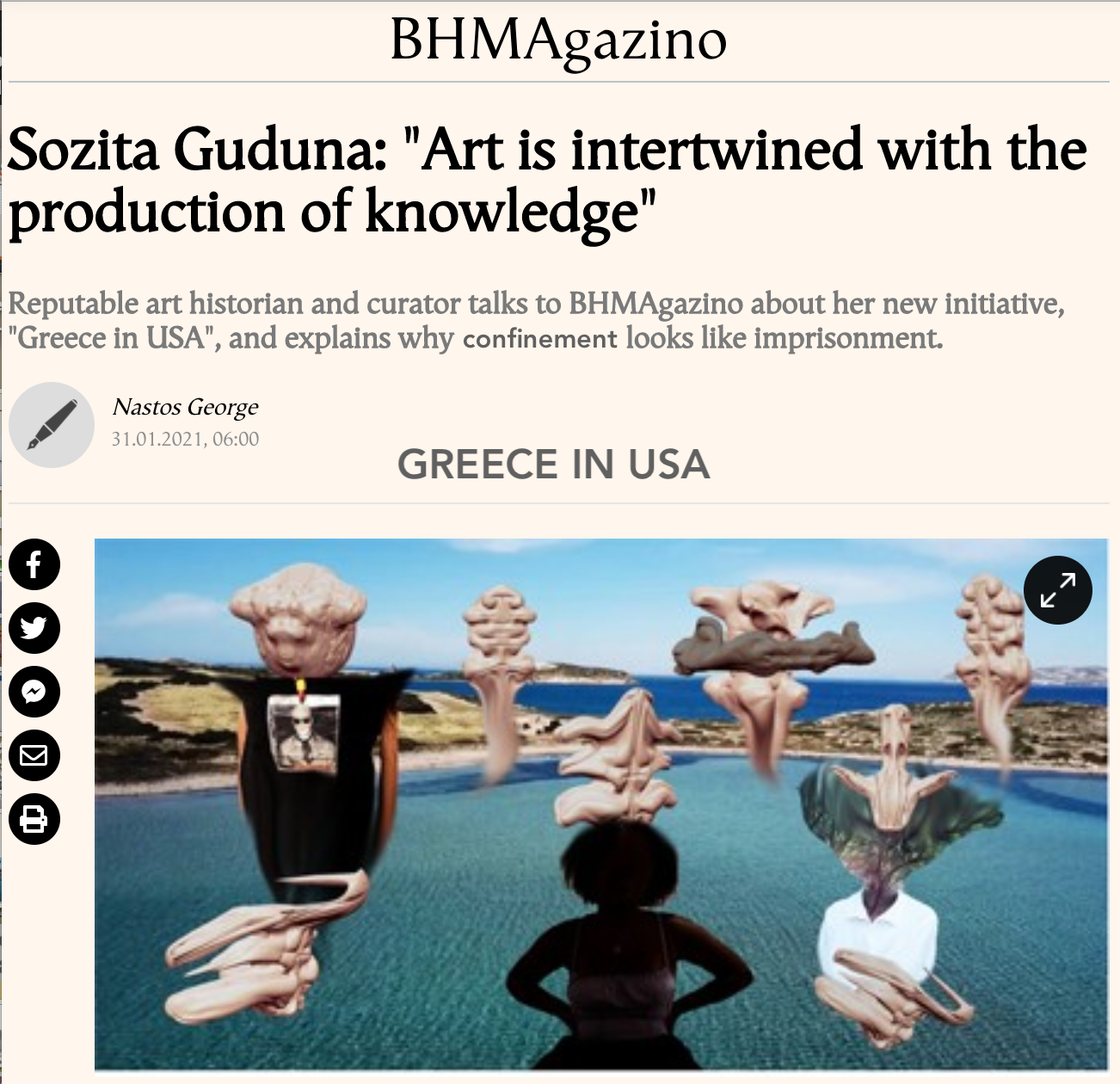

 VIMA MAGAZINO VIMA NEWSPAPER
VIMA MAGAZINO VIMA NEWSPAPER Karen Finley
Karen Finley Panos Kokkinias
Panos Kokkinias Steven C. Harvey
Steven C. Harvey Margarita Athanasiou
Margarita Athanasiou Aristides Lappas
Aristides Lappas Stefanos Tsivopoulos
Stefanos Tsivopoulos Chrysanne Stathacos
Chrysanne Stathacos
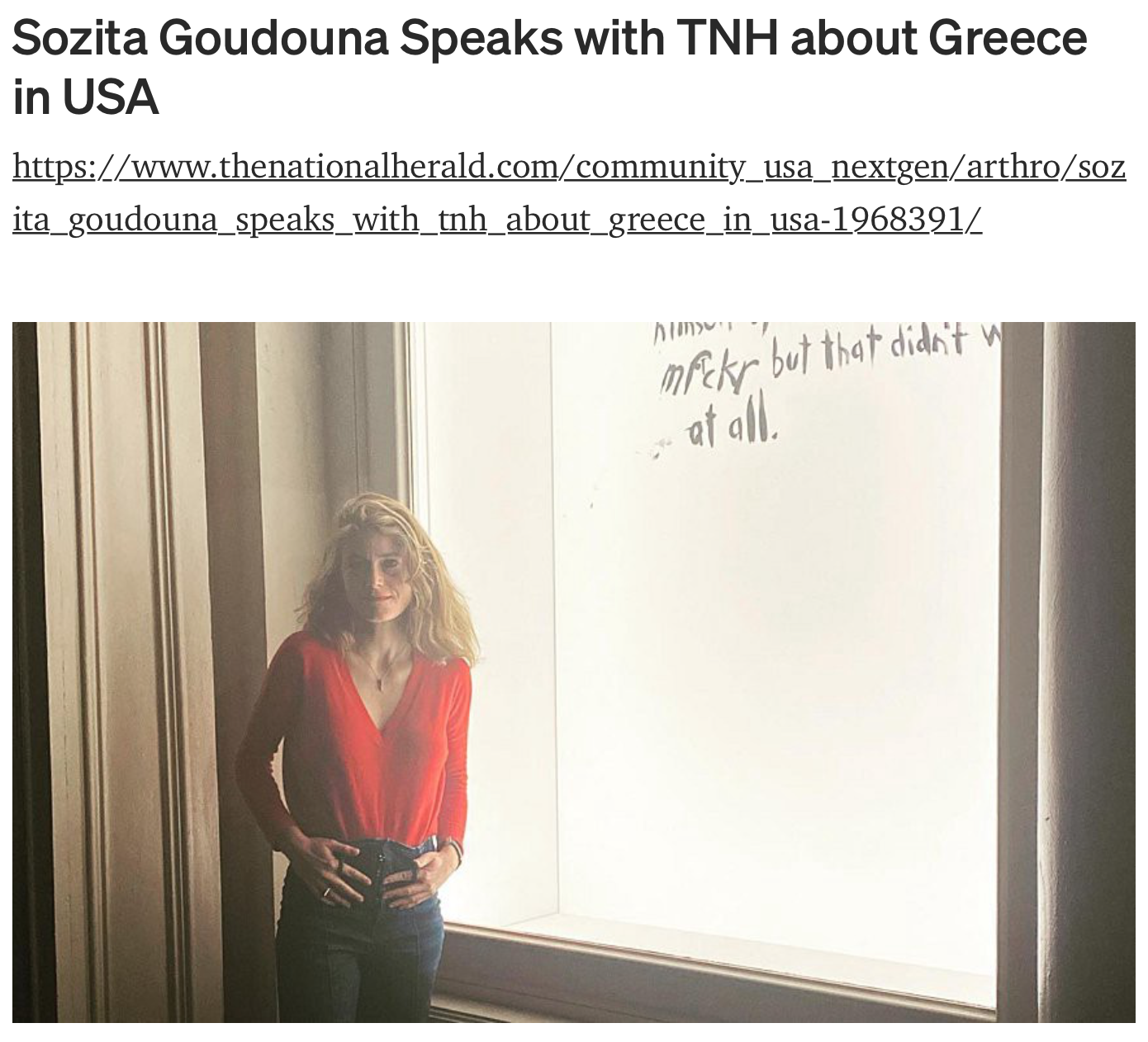



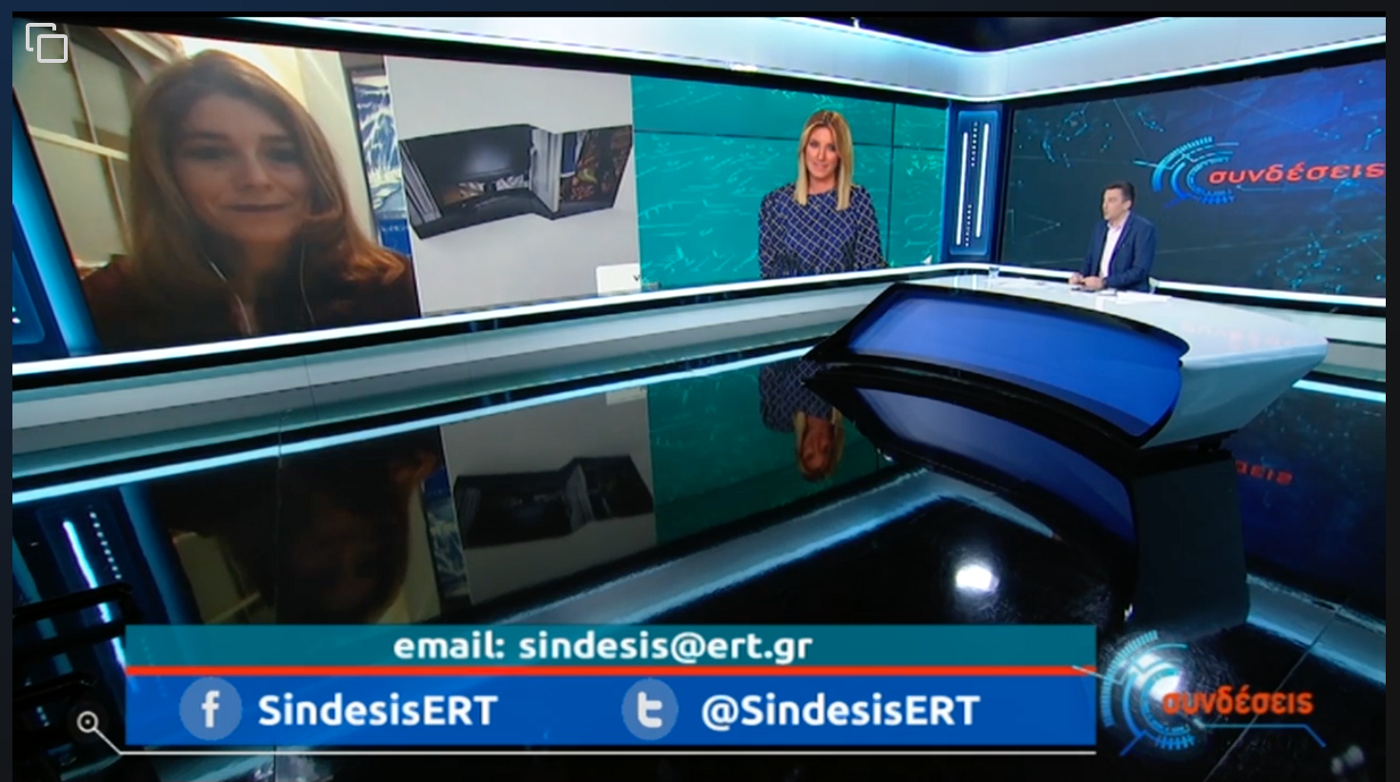
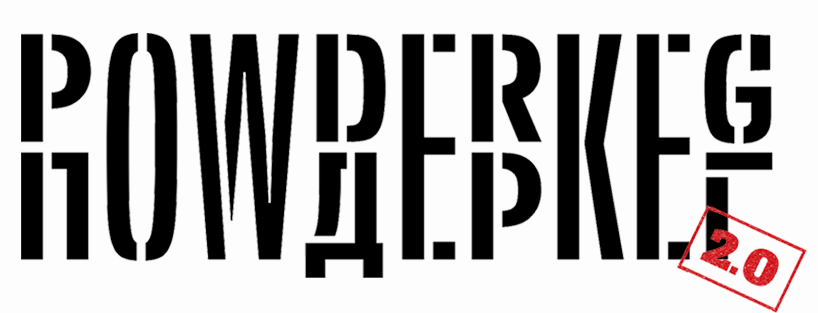


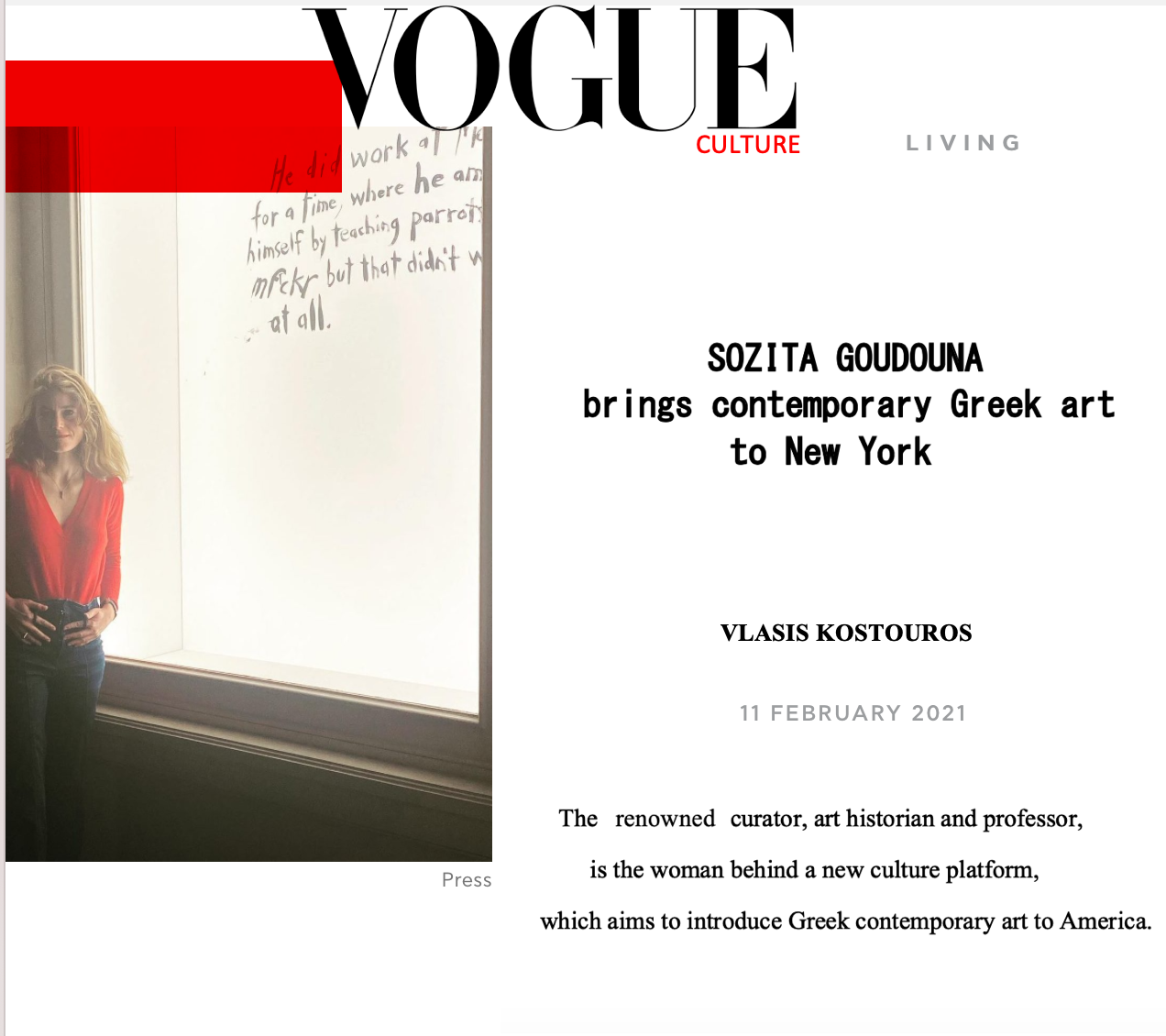









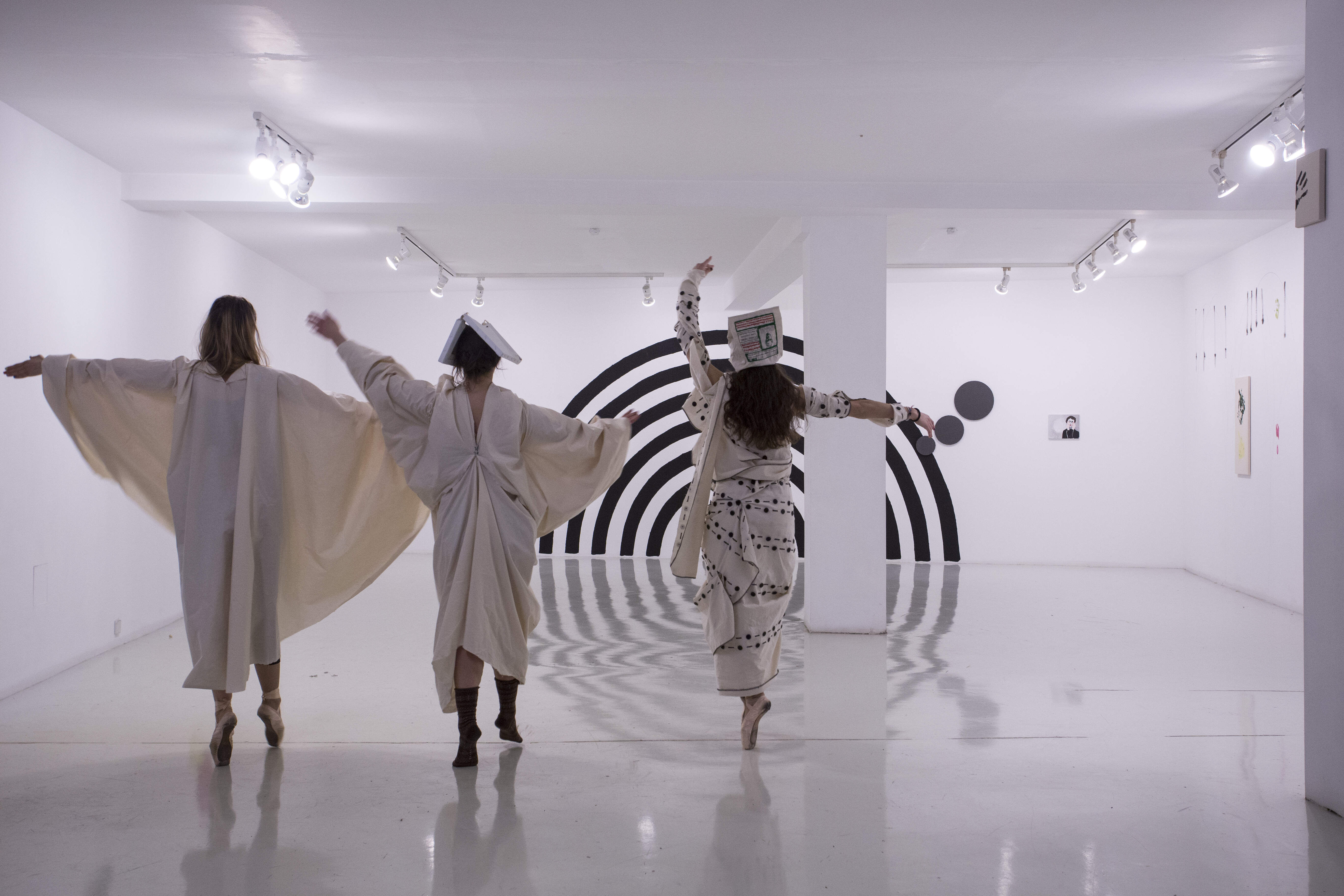
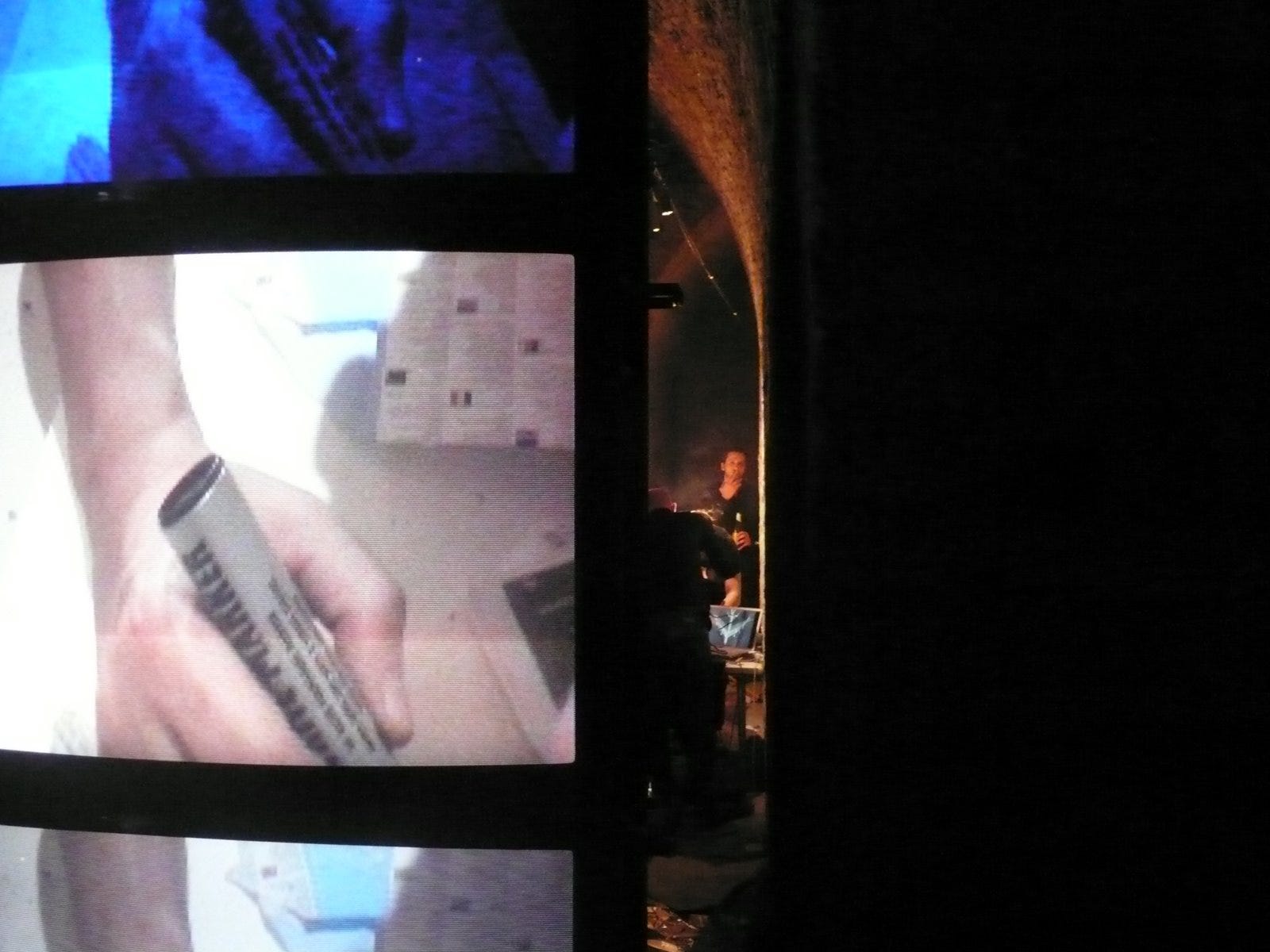 Spaces Within Spaces Festival, The Erasers, Shunt Vaults, 2009, cur. Sozita Goudouna
Spaces Within Spaces Festival, The Erasers, Shunt Vaults, 2009, cur. Sozita Goudouna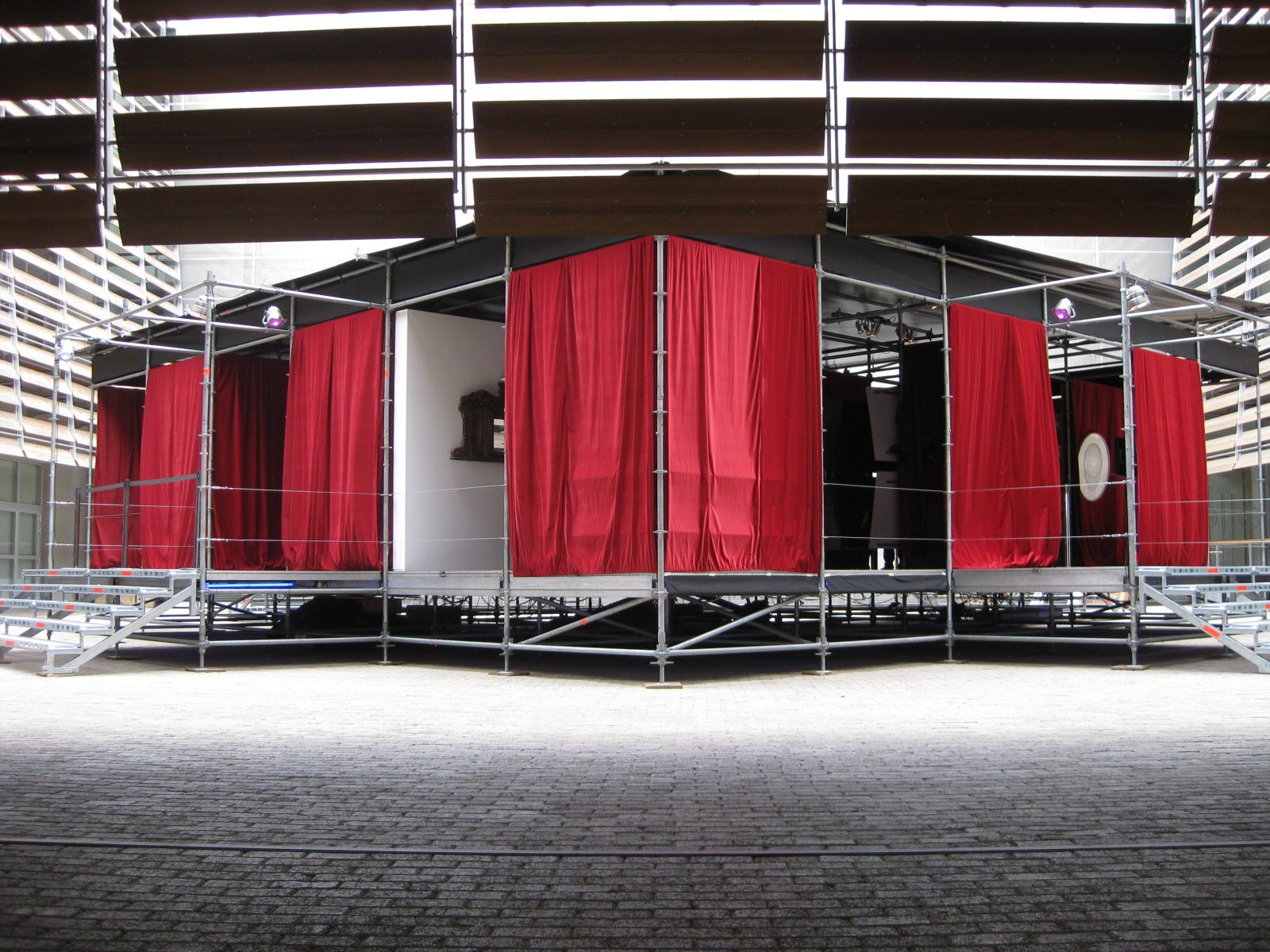 Locus Solus, Benaki Museum, 2010, cur Sozita Goudouna
Locus Solus, Benaki Museum, 2010, cur Sozita Goudouna 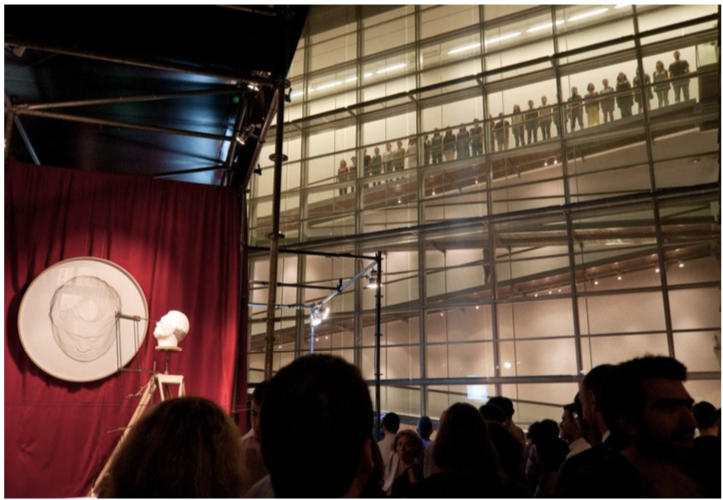 Locus Solus, Benaki Museum, 2010, cur Sozita Goudouna
Locus Solus, Benaki Museum, 2010, cur Sozita Goudouna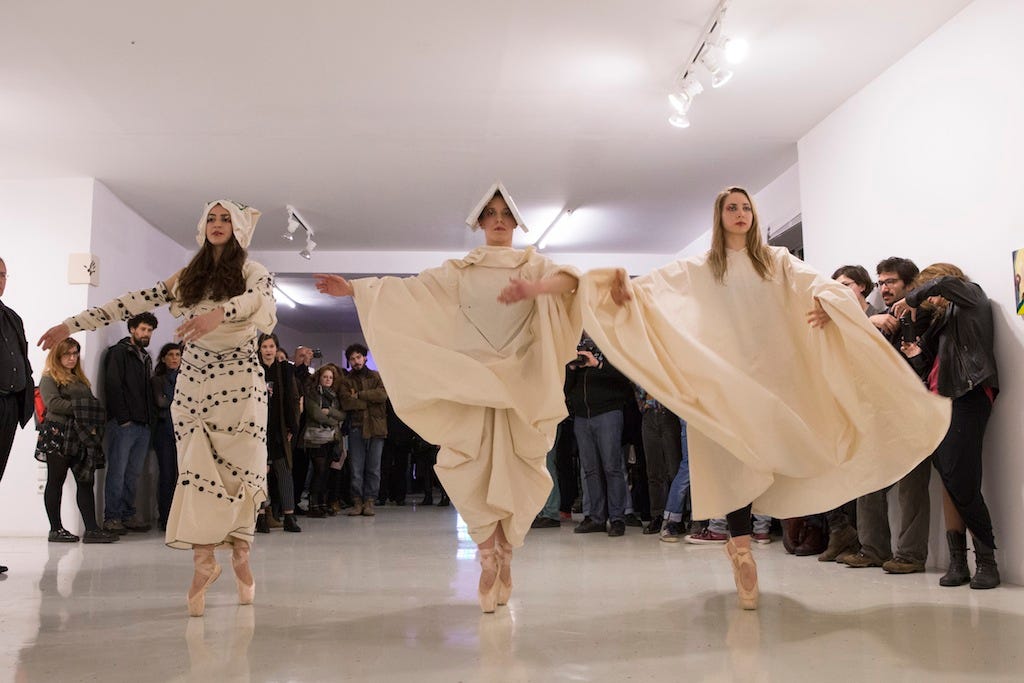 Martin Creed, Solo Exhibition and performance, 1st EU Athens Art Residency, cur. Sozita Goudouna and Nefeli Skarmea
Martin Creed, Solo Exhibition and performance, 1st EU Athens Art Residency, cur. Sozita Goudouna and Nefeli Skarmea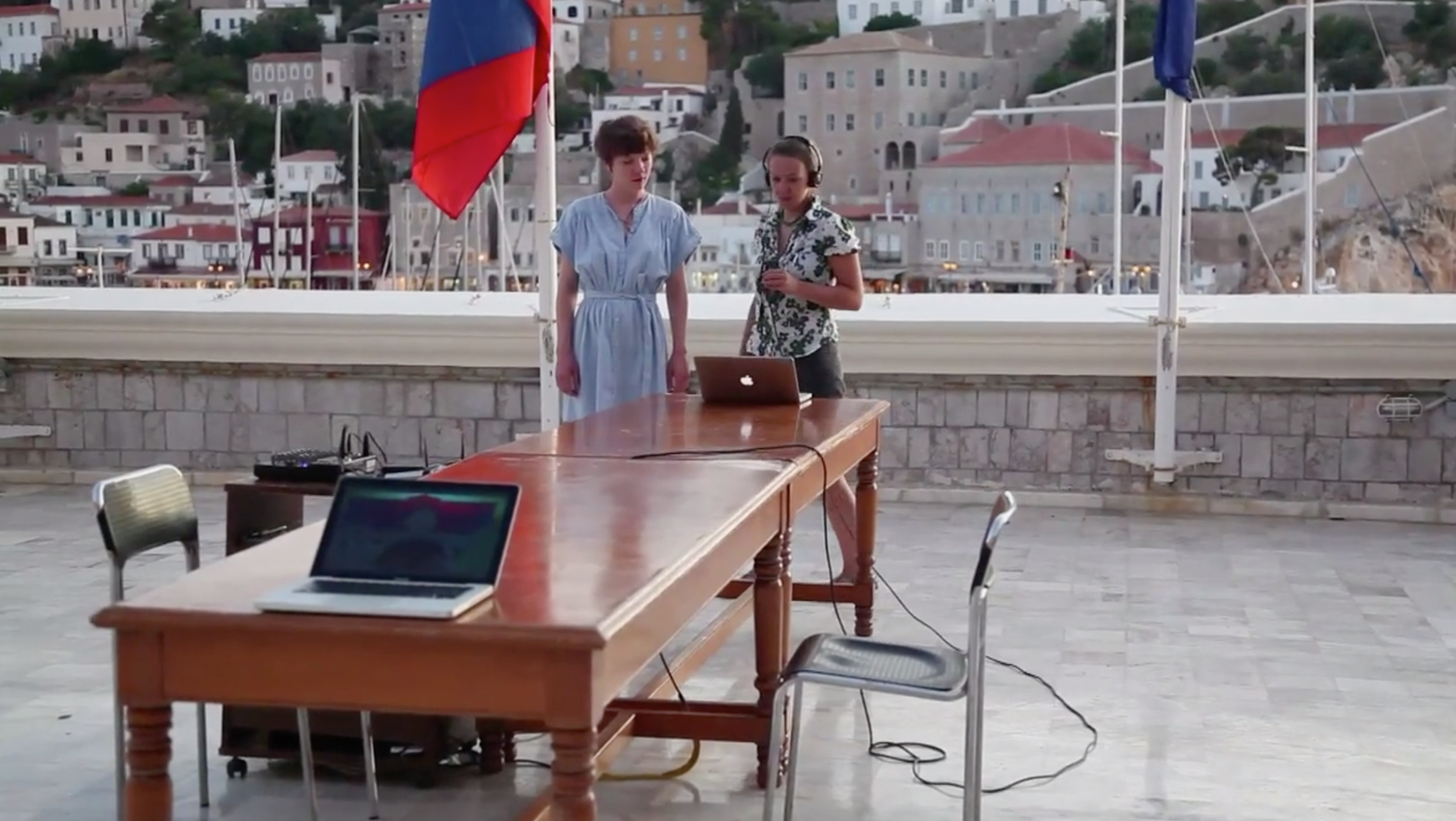 Eleventh Plateau Eco Festival, Hydra, 2011 cur. by Sozita Goudouna
Eleventh Plateau Eco Festival, Hydra, 2011 cur. by Sozita Goudouna  OUT SCORE, research project at Aixoni, cur Sozita Goudouna, choreography Maria Hassabi 2019)
OUT SCORE, research project at Aixoni, cur Sozita Goudouna, choreography Maria Hassabi 2019) 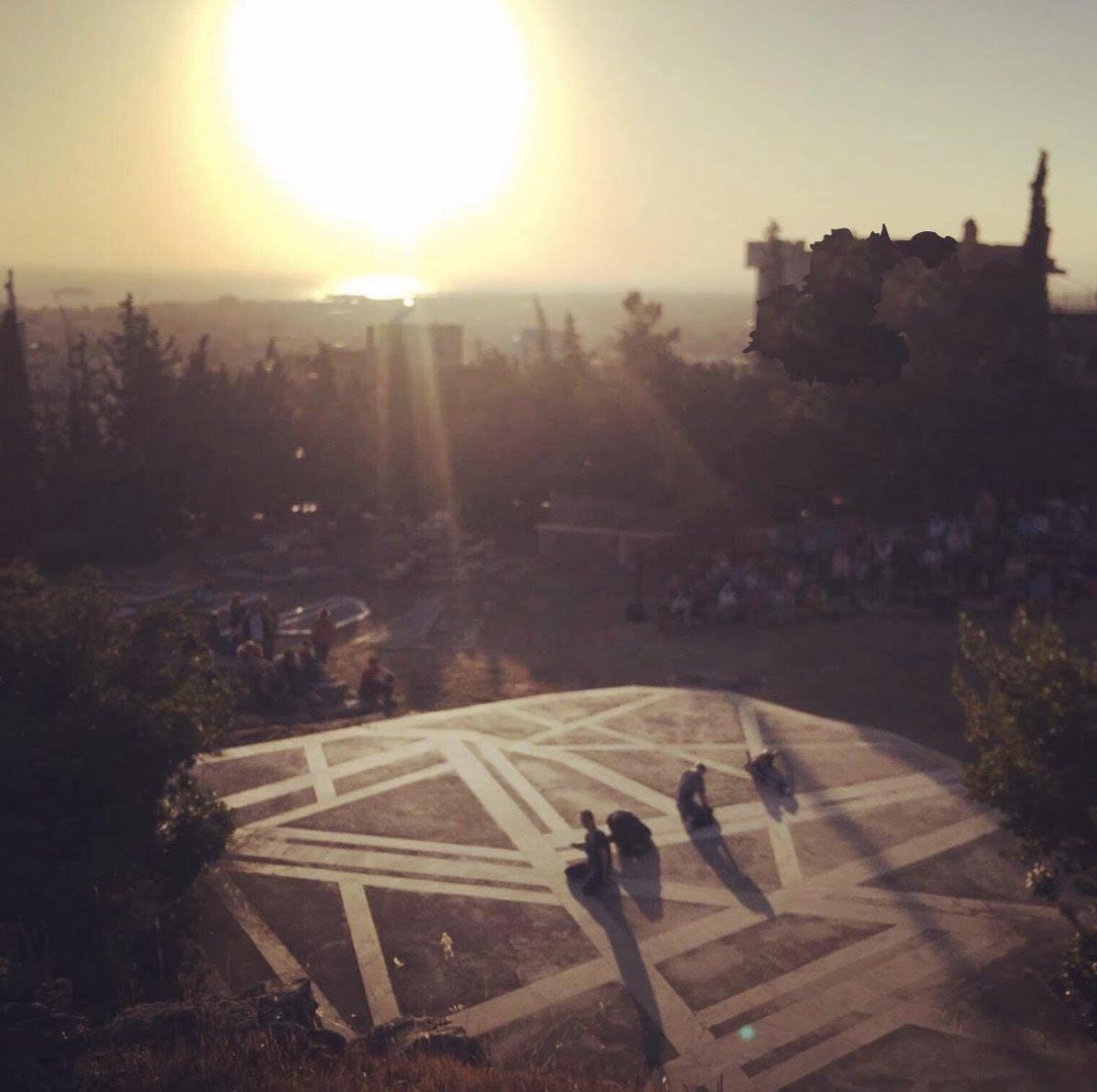 OUT SCORE, research project at Aixoni, cur Sozita Goudouna, choreography Maria Hassabi 2019)
OUT SCORE, research project at Aixoni, cur Sozita Goudouna, choreography Maria Hassabi 2019) Pettibon, “Frenchette,” Inaugural Exhibition at Zwirner Gallery Paris, October, 2019
Pettibon, “Frenchette,” Inaugural Exhibition at Zwirner Gallery Paris, October, 2019 Performa Biennial 2019 ~ Opening Gala Theme: Bauhaus
Performa Biennial 2019 ~ Opening Gala Theme: Bauhaus Sozita Goudouna and Raymond Pettibon at Pettibon Studio
Sozita Goudouna and Raymond Pettibon at Pettibon Studio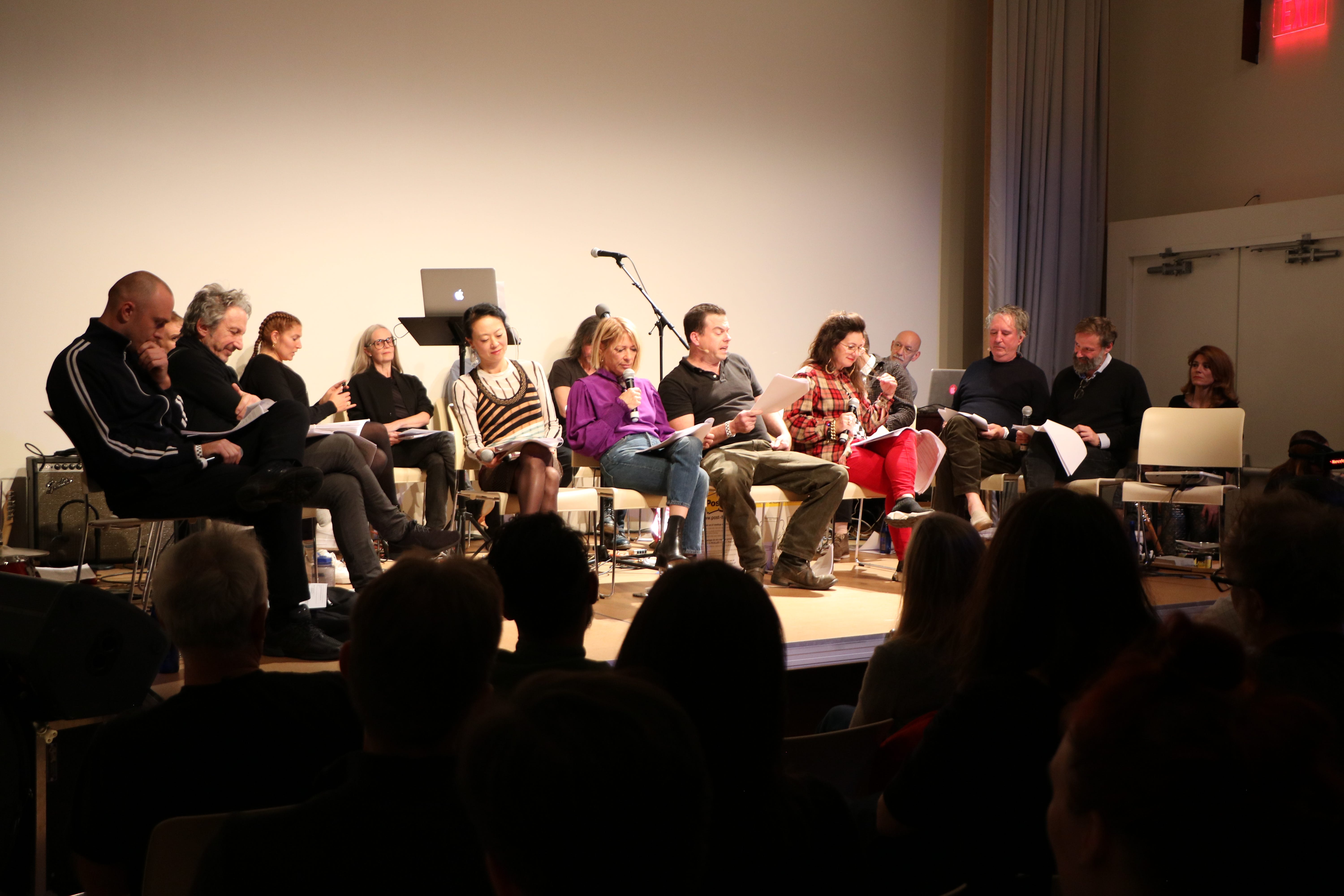 Pettibon “WHOEVER SHOWS: STRIKE UYP TH’ BAND!” Produced by Sozita Goudouna, 14th November 2019, New Museum, Performa Biennial
Pettibon “WHOEVER SHOWS: STRIKE UYP TH’ BAND!” Produced by Sozita Goudouna, 14th November 2019, New Museum, Performa Biennial








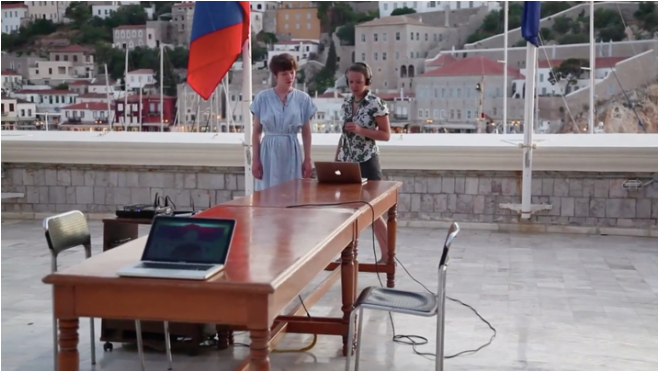
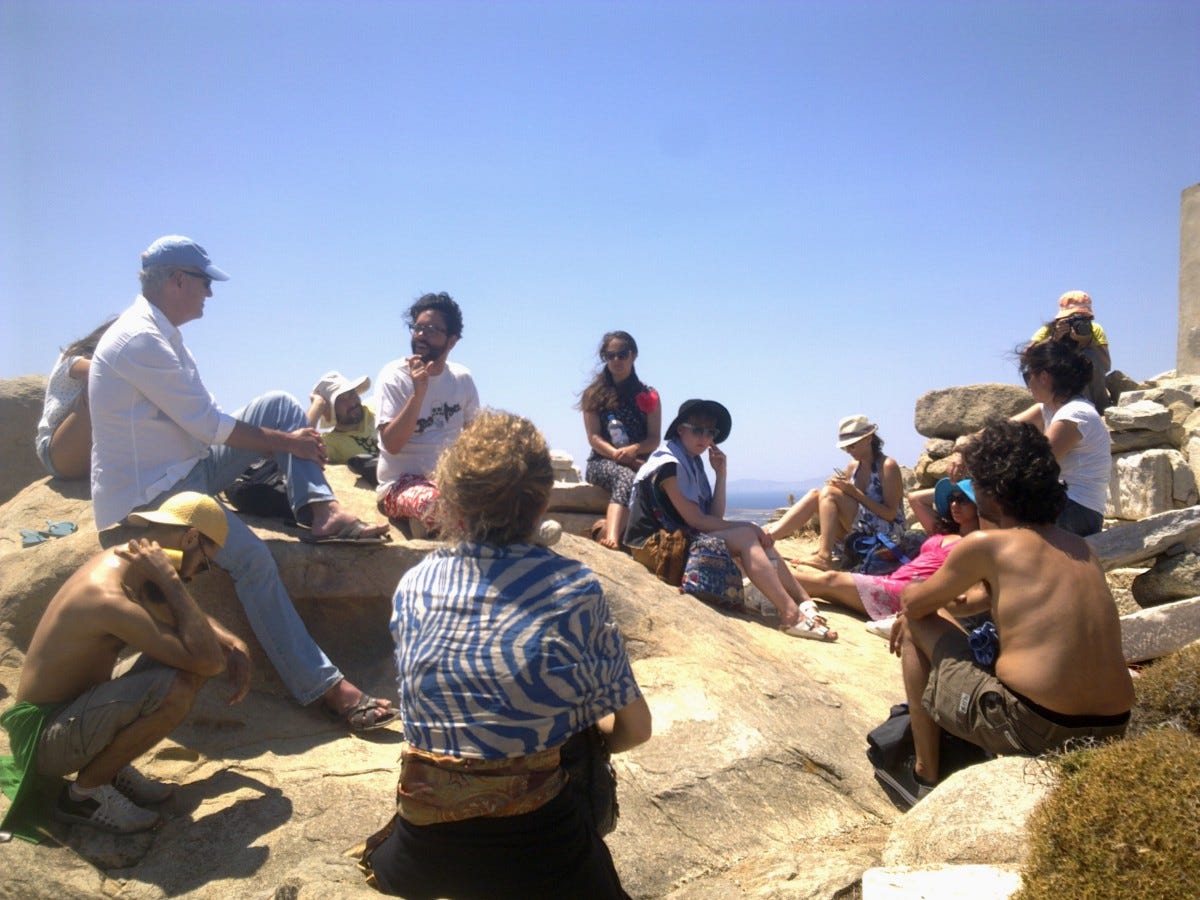



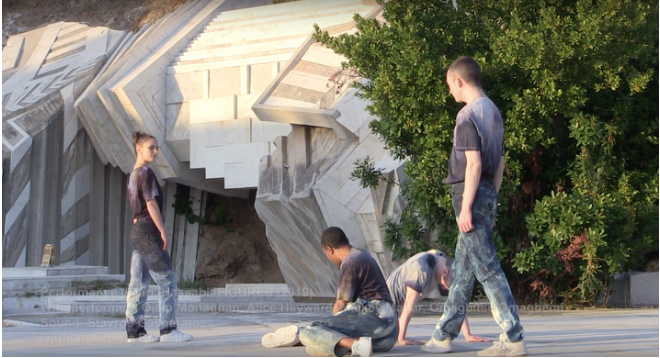

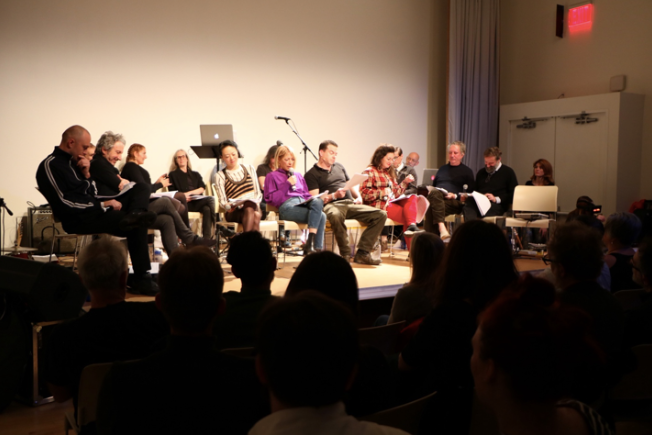
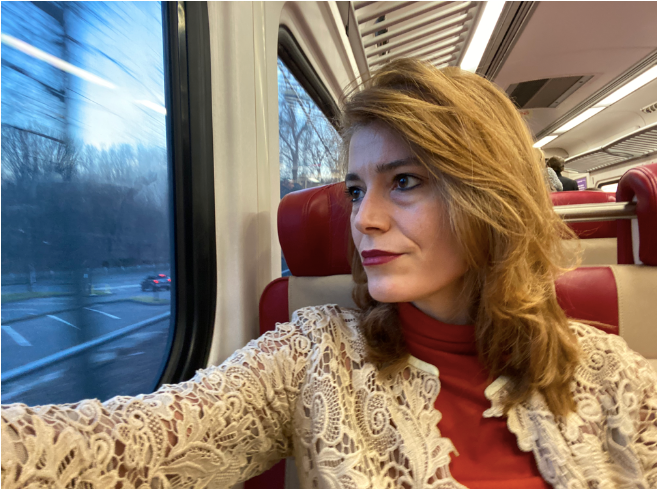
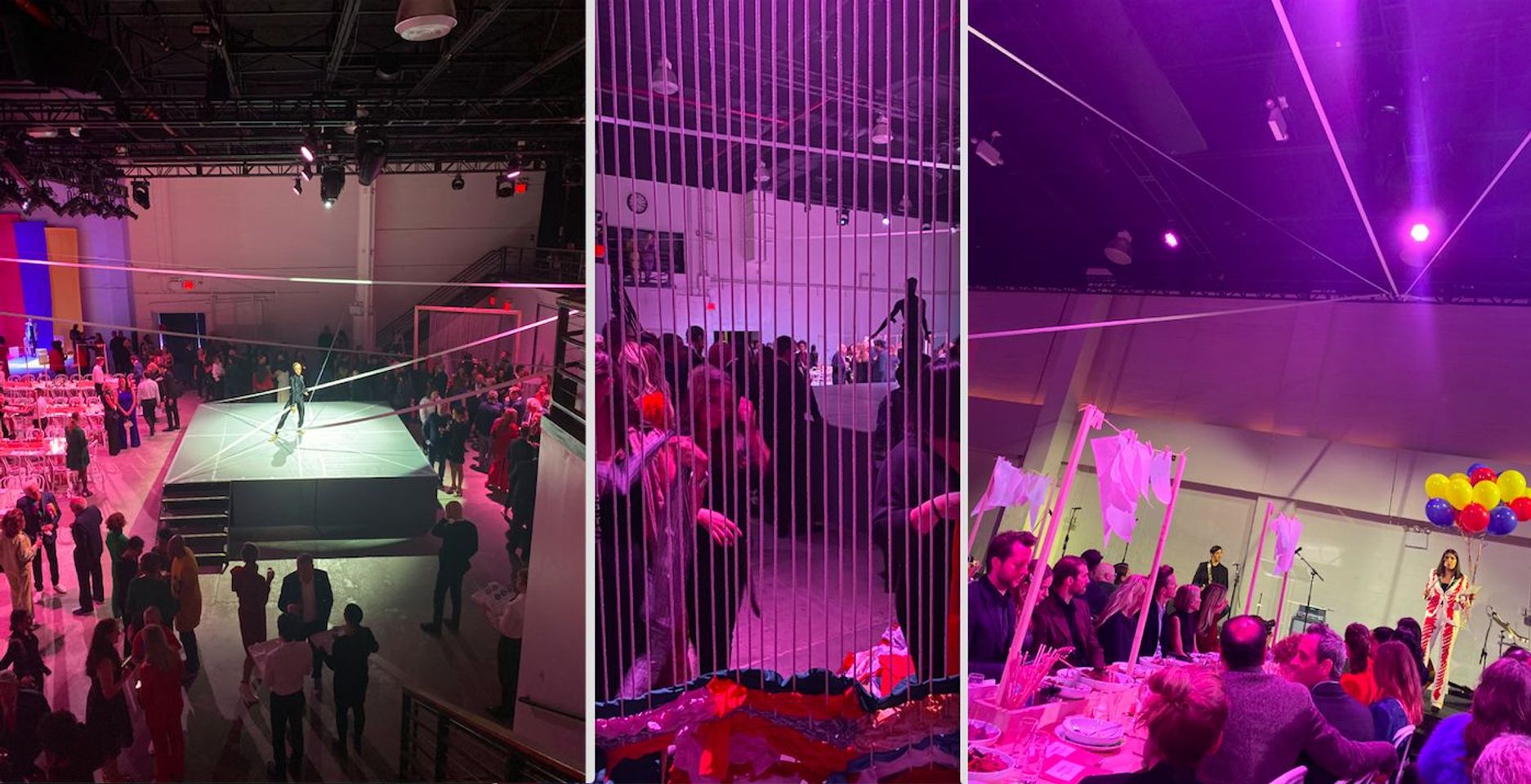
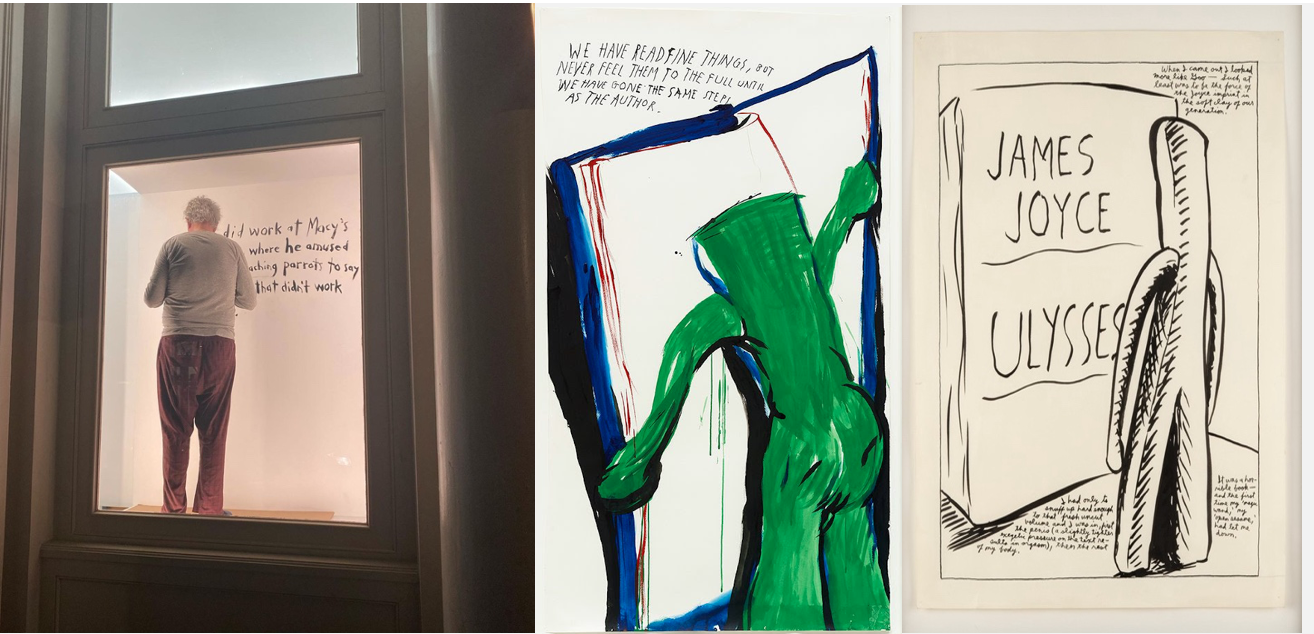
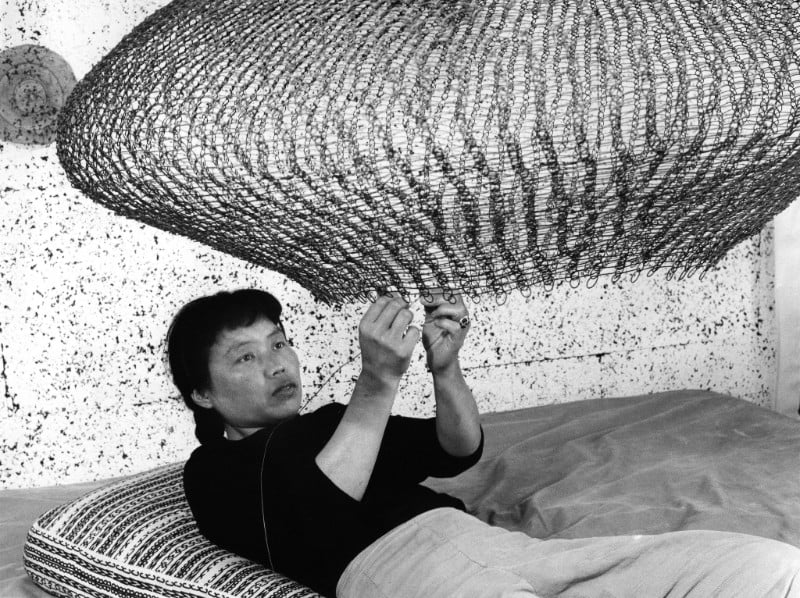 Ruth Asawa, 1957. Photo courtesy Imogen Cunningham ©2017 Imogen Cunningham Trust artwork ©Estate of Ruth Asawa.
Ruth Asawa, 1957. Photo courtesy Imogen Cunningham ©2017 Imogen Cunningham Trust artwork ©Estate of Ruth Asawa.